Stamped concrete pool decks combine the durability and low maintenance of concrete with the aesthetic appeal of natural materials. By using textured stamps, color hardeners, and release agents, these decks can mimic stone, slate, wood, brick, and more, offering homeowners endless design possibilities while ensuring a slip-resistant, long-lasting surface. They resist harsh pool chemicals and constant water exposure, and with proper sealing—often enhanced with non-skid grit additives—they stay comfortable underfoot even in hot climates.
1. Ashlar Slate Pattern
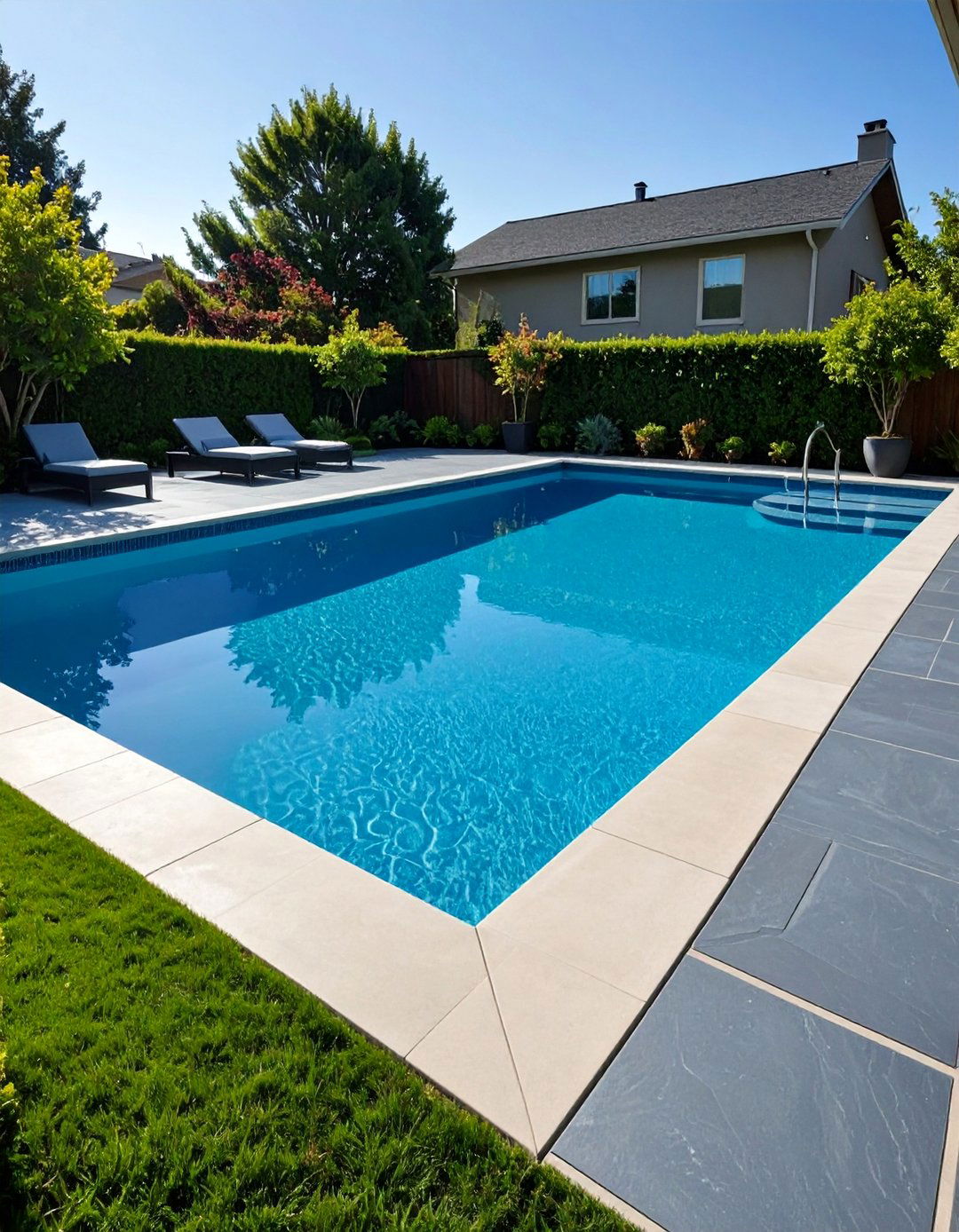
The ashlar slate pattern replicates the look of hand-cut slate blocks with crisp, irregular grout lines, bringing a sophisticated, upscale feel to any pool area. Installation involves stamping a concrete slab with a multi-sized slate mat, then accentuating the seams with antiquing release agents and tinted sealer to add depth and realism. This method yields a slip-resistant surface that remains cool underfoot and blends seamlessly with traditional and contemporary landscapes. Homeowners often enhance this pattern further by incorporating pebble-filled joints or contrasting coping stones for added visual interest.
2. Flagstone Pattern
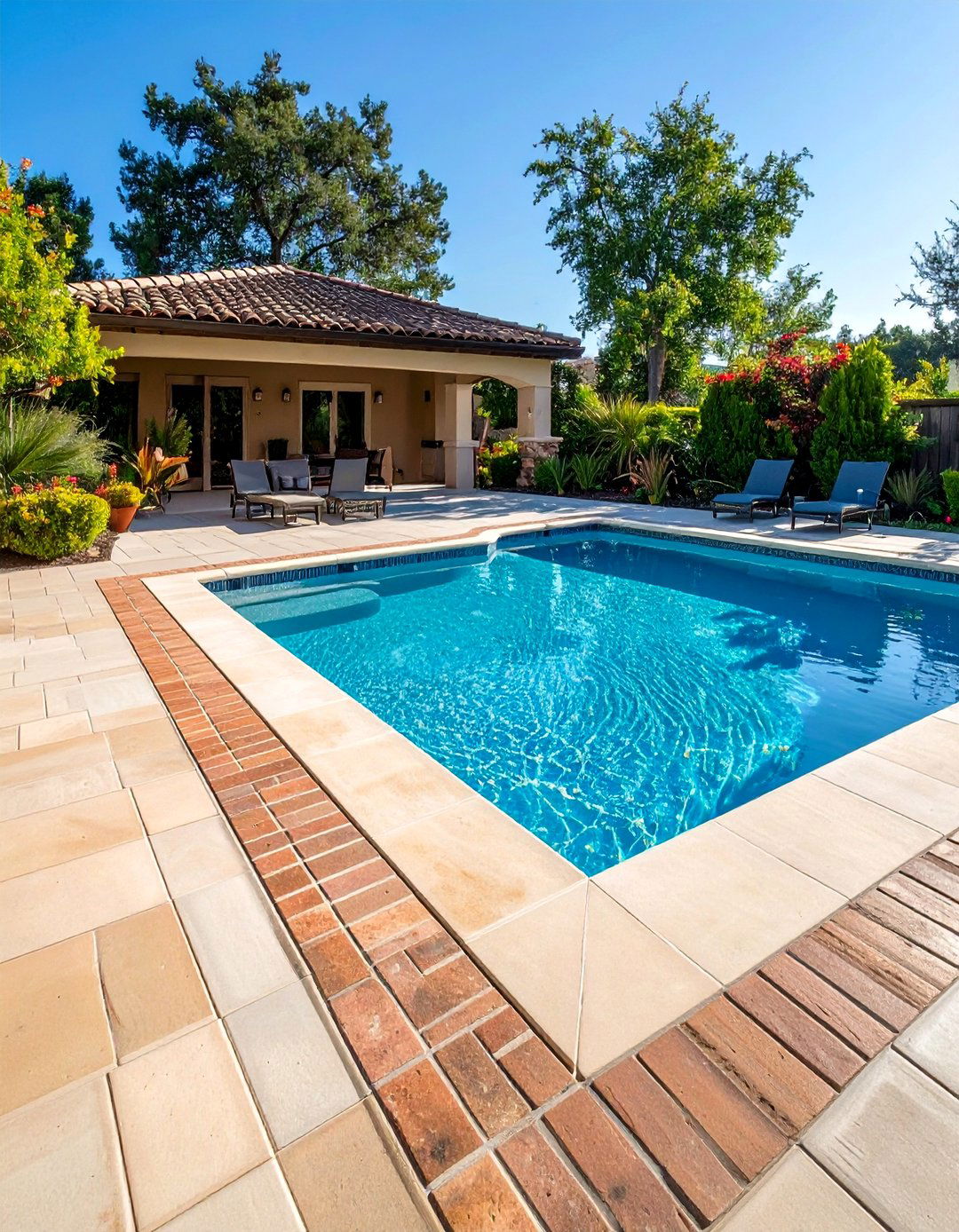
Flagstone stamping offers a timeless, rustic charm by imitating the uneven shapes and textures of natural flagstone. Contractors apply a flagstone mat over freshly poured, colored concrete, then use acid stains or pigment release agents to replicate the stone’s natural hues and variances. This design works beautifully in Mediterranean or farmhouse-style backyards, creating an organic transition between the pool deck and surrounding garden or patio areas. The irregular grout lines also help hide joints and minor imperfections, ensuring a welcoming, high-end look without the upkeep of real stone.
3. Wood-Plank Texture
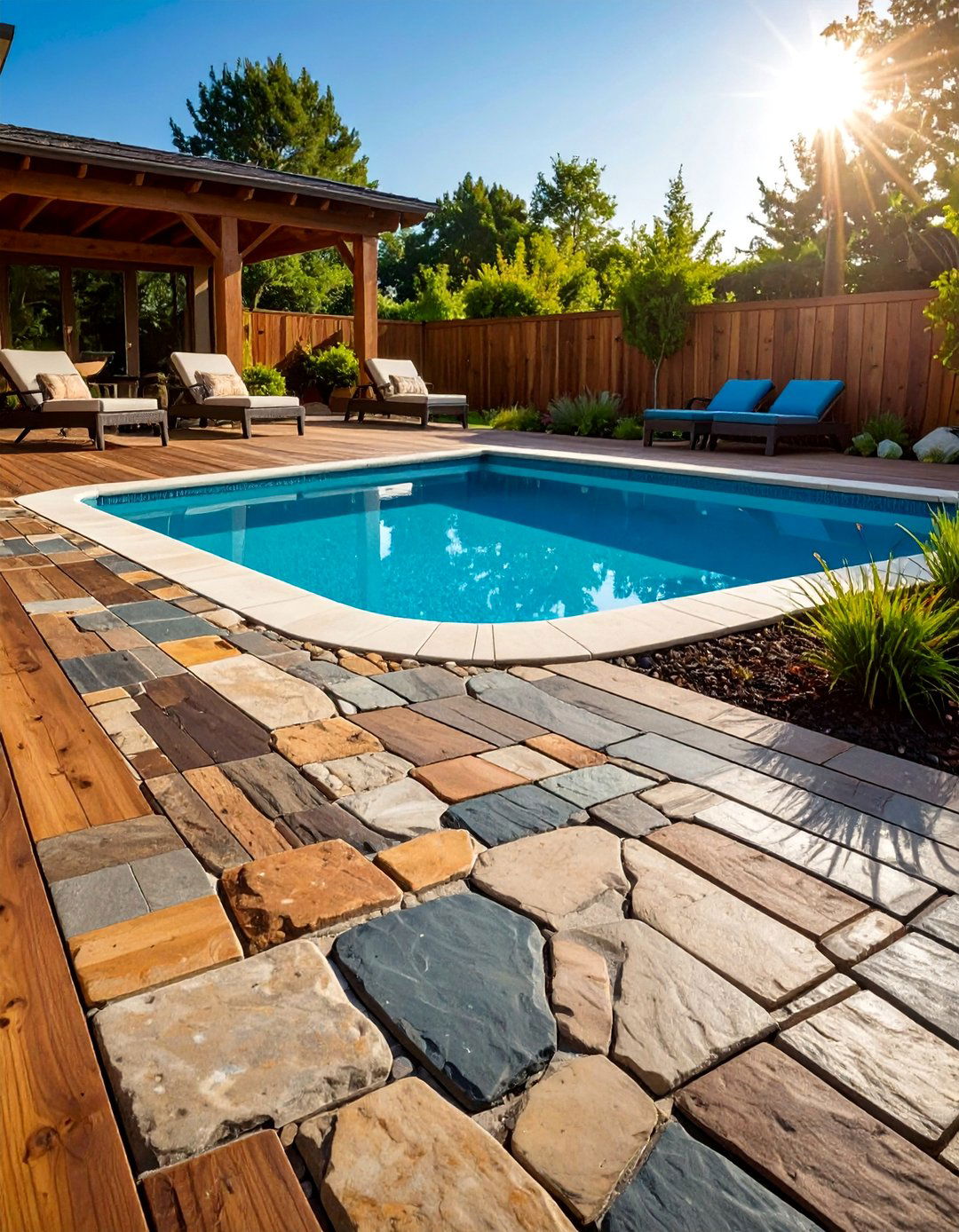
Wood-plank stamped concrete provides the warmth and grain patterns of wooden decking, minus the risk of rot or splinters. Using specialized wood-grain mats and soft rubber mallets, contractors imprint realistic plank lines, knots, and wood grain directly into the concrete. Combined with integrally colored concrete mixtures and two-tone release agents, the result convincingly mimics natural wood. This option is ideal for modern, rustic, or coastal pool designs, offering a stable, termite-free surface that stands up to heavy foot traffic and pool chemicals while maintaining a cozy, inviting aesthetic.
4. Seamless Slate Finish
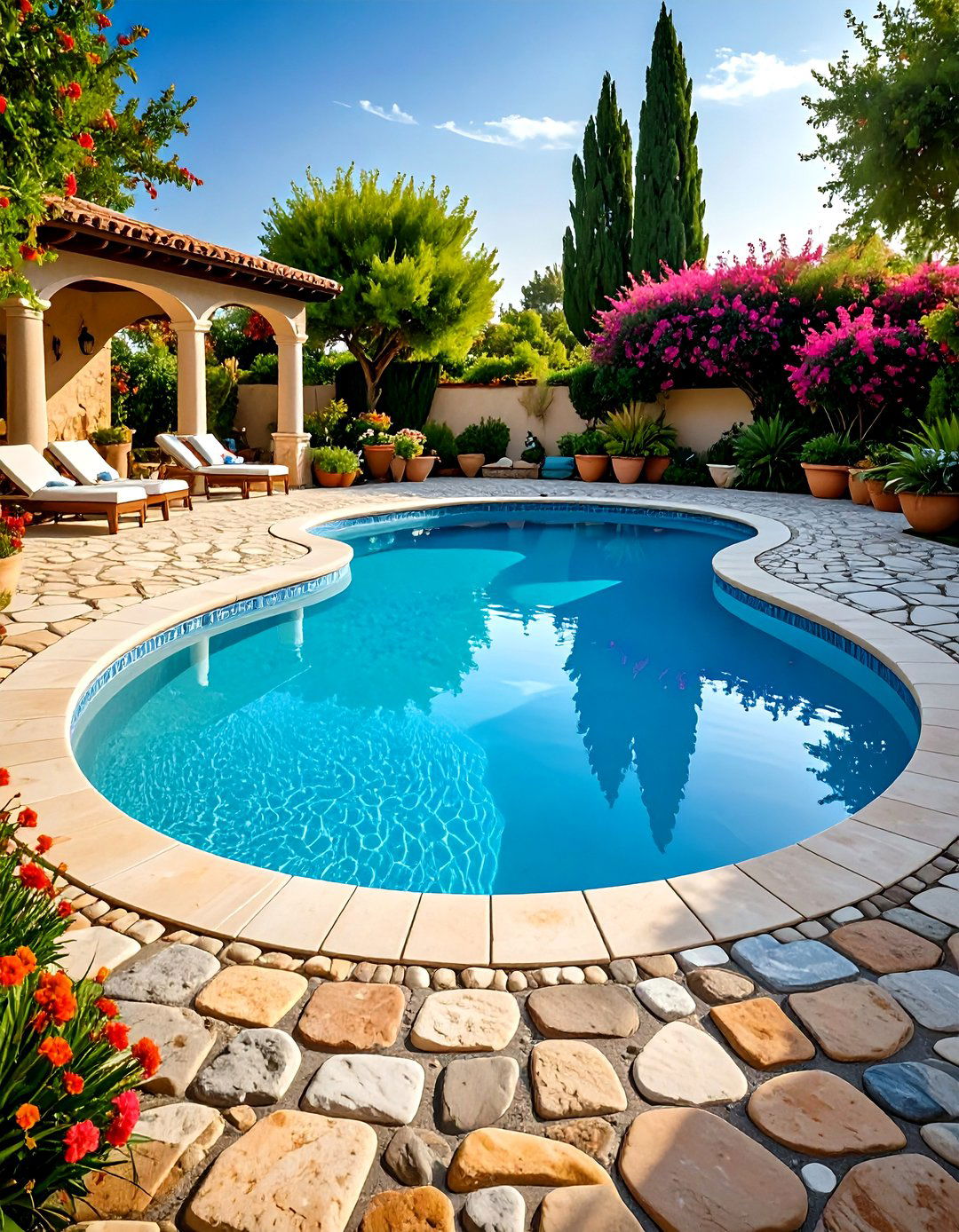
Unlike patterned stamps, seamless slate skins create a continuous stone appearance reminiscent of a single cut slab. These texture skins are rolled over the surface to impart a subtle stone-like texture without distinct grout lines, yielding a sleek, minimalist effect. Seamless slate finishes are popular for contemporary pool decks where clean lines and uniformity are desired. They pair well with linear pool shapes and minimalist landscaping, and when sealed correctly, they offer enhanced slip resistance and heat reduction underfoot—perfect for modern design enthusiasts seeking understated elegance.
5. Diamond Tile Design
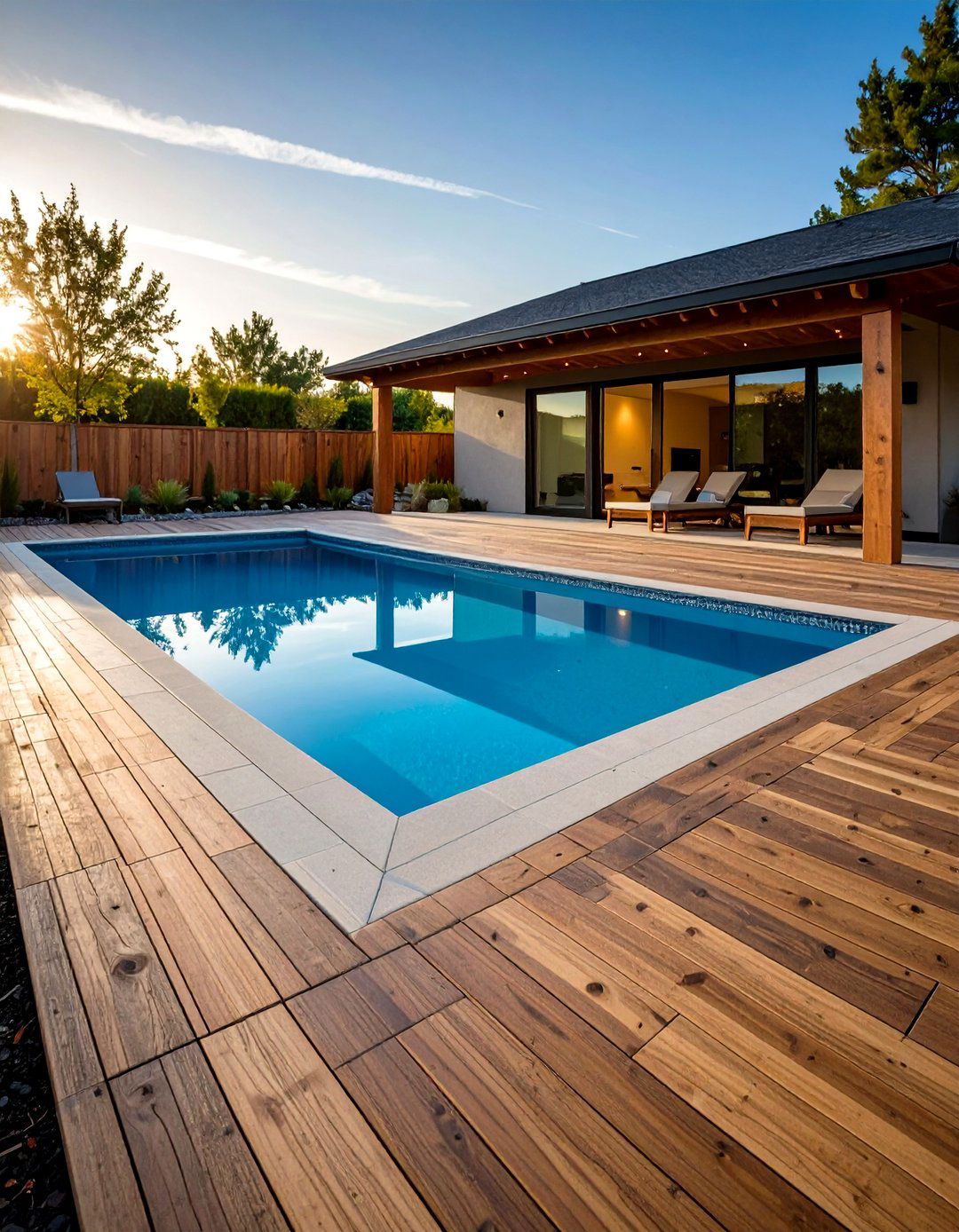
A diamond tile pattern stamped with a stone texture skin evokes the look of hand-laid tile and geometric flooring, elevating a pool deck into a statement piece. This design typically uses a diamond-shaped stamp arrayed in a diagonal grid, with contrasting color hardeners to accentuate edges. The result is an eye-catching pattern that adds sophistication without intricate tile installation. For extra flair, homeowners often inset a different texture or color at the diamonds’ intersections, creating a custom, mosaic-like centerpiece that complements pool lighting and water features.
6. Hand-Cut Border Accents
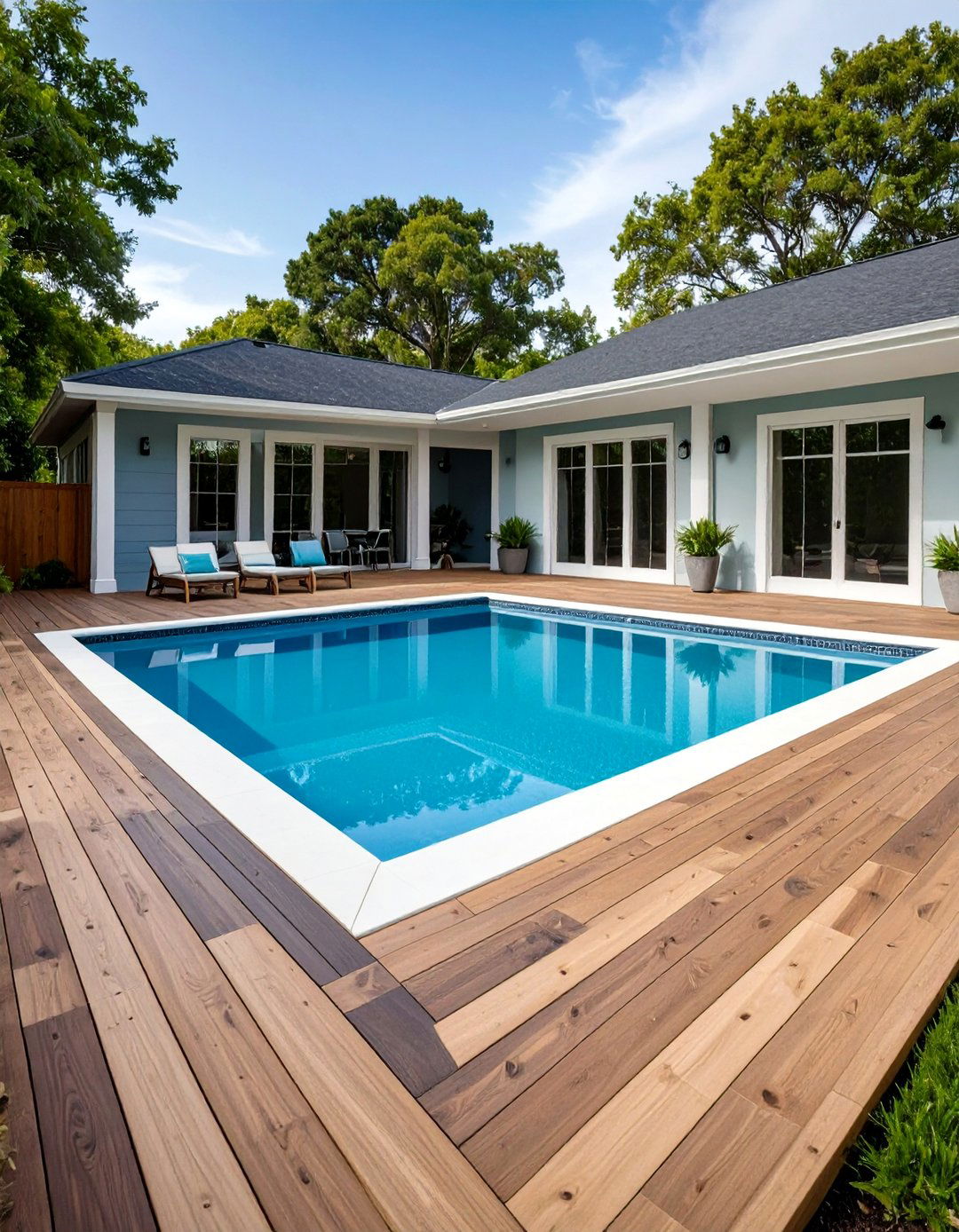
Accentuating a stamped field pattern with a hand-cut border adds a refined edge to any pool deck. After stamping the main field—whether slate, stone, or wood—contractors score or wash-etch the outer perimeter to create a narrow, contrasting band. This border can be broom-finished, colored differently, or stamped with a more delicate pattern for subtle contrast. The technique defines the deck edges, highlights curves, and provides a polished transition to adjacent landscaping or coping materials, resulting in a cohesive, architecturally driven design.
7. Leafy Accents Pattern

For a pool deck with a walk-in-the-woods allure, overlay a seamless slate pattern with a random leaf imprint. Using small leaf-shaped stamps, artisans scatter delicate foliage textures across the surface before sealing with autumnal hues—terra cotta pigments and charcoal release agents—to mimic fallen leaves. This organic motif harmonizes with wooded backyards and stone accents, creating an immersive, nature-inspired environment. The subtle texturing also enhances slip resistance, making it as practical as it is picturesque.
8. White-on-White Cool Deck
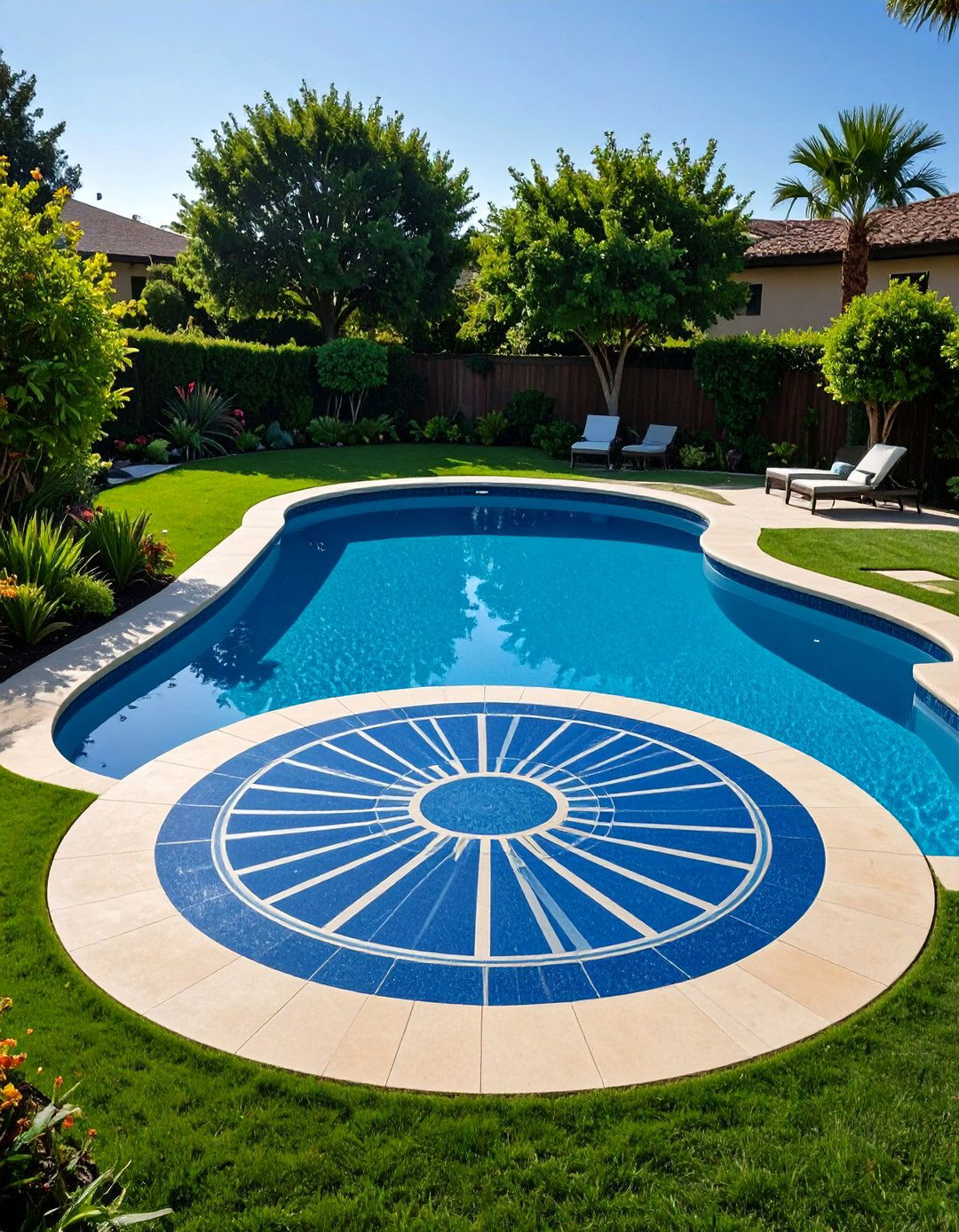
White-on-white stamped decks use a titanium-white concrete mix and matching release agents to achieve a pristine, ultra-bright surface that stays up to 20°F cooler than traditional decks. After stamping with a seamless texture skin (often Roman slate), joints are filled with white grout to maintain the monochromatic palette. This approach suits minimalist and coastal designs, reflecting sunlight and giving pool areas a crisp, high-end resort vibe. Proper sealing protects against chlorine and UV exposure, ensuring long-term brightness and durability.
9. Sandstone Stamp
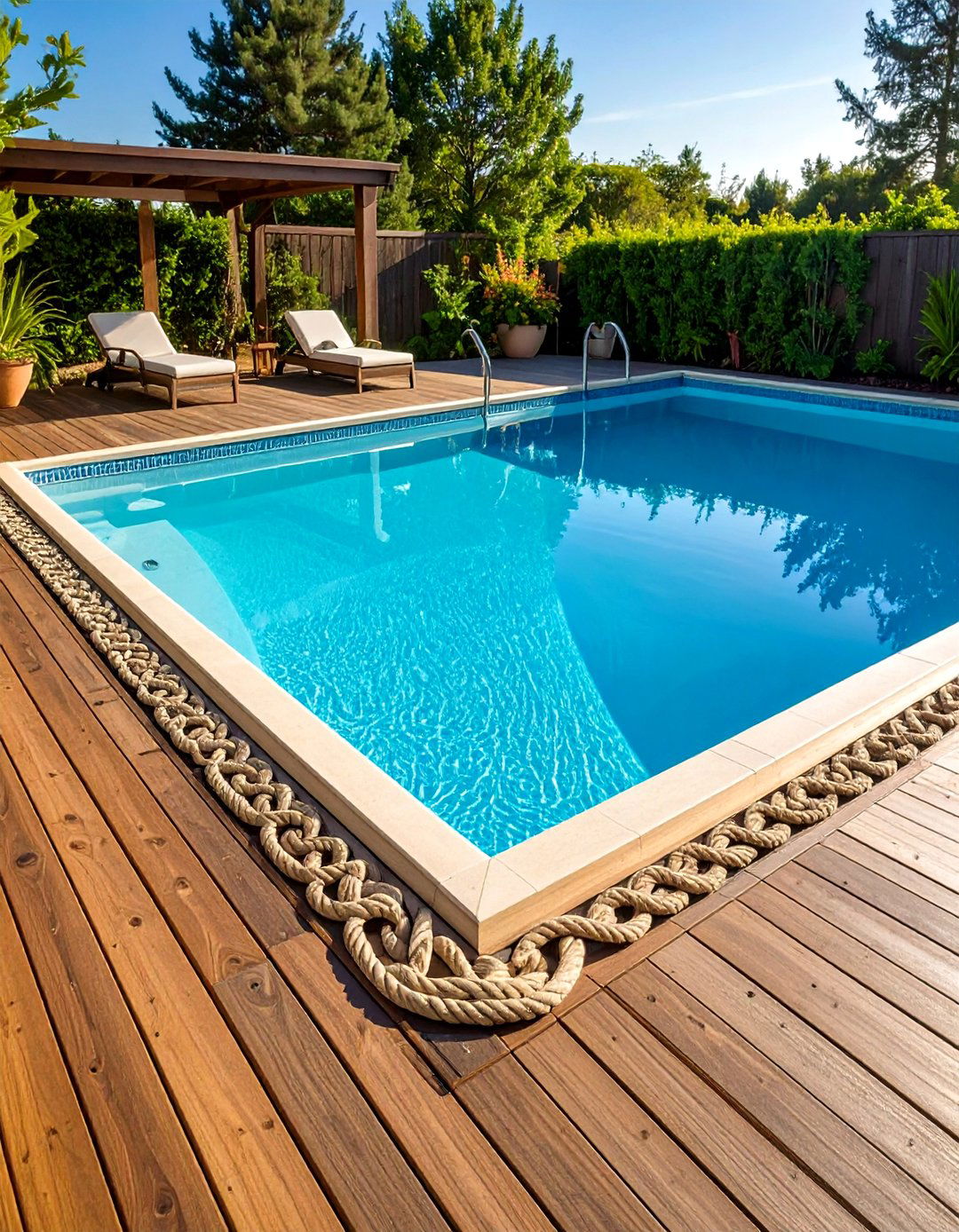
Sandstone impressions recreate the layered, earthy tones of natural sandstone without the cost or irregularity of real stone slabs. Rubber mats bearing coarse, sand-stone textures are pressed into colored concrete, then dusted with contrasting release powders for depth. The result is a warm, inviting deck that blends seamlessly with desert or southwestern landscapes. This style accommodates both traditional and modern pools, offering a versatile look that ages gracefully and resists heat absorption for comfortable barefoot walking.
10. Brick Border Accents
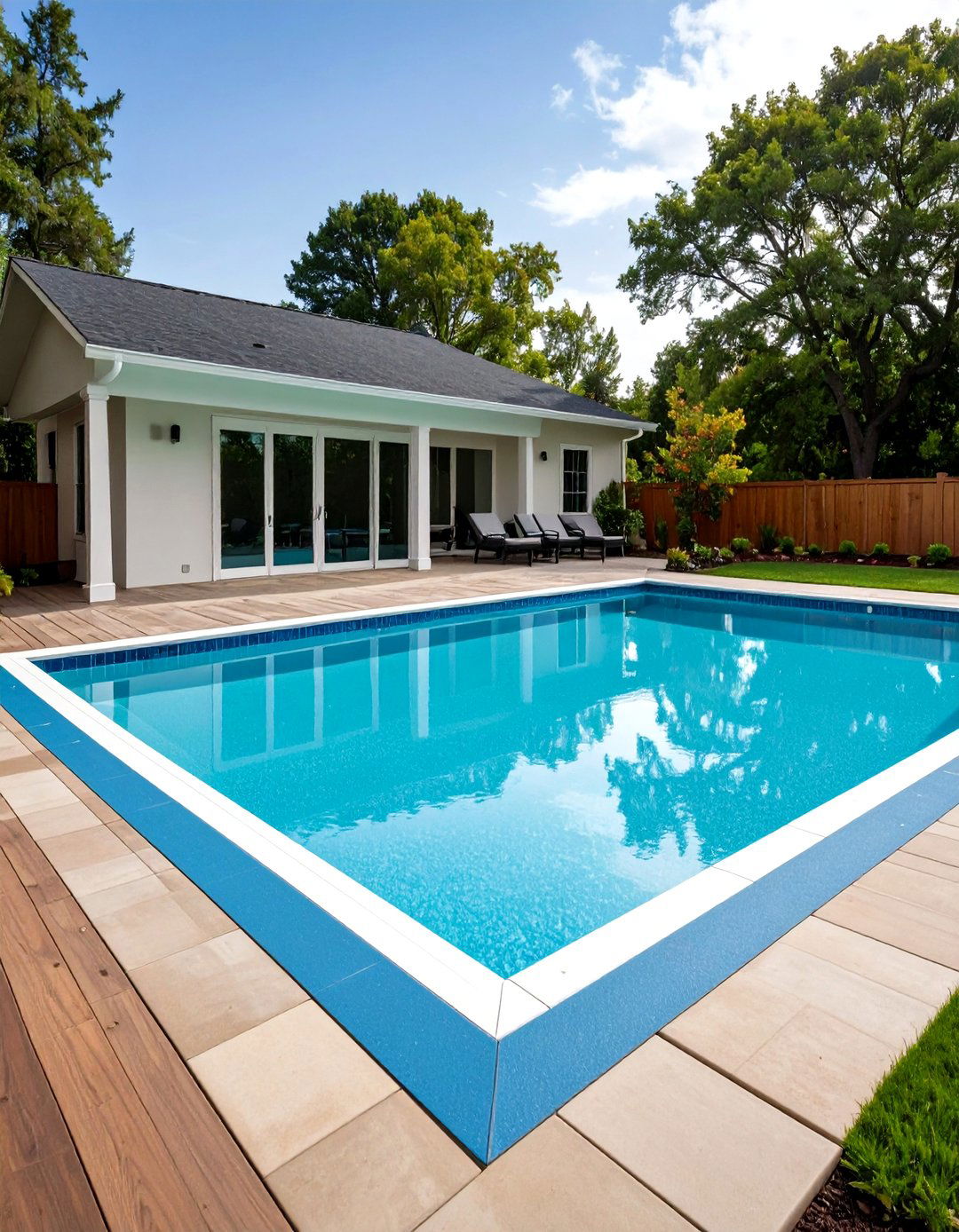
Incorporating a brick-running-bond pattern as a border around a stamped field creates a charming, classic aesthetic. Using narrow brick-stamp mats in contrasting red or brown release agent, the border frames a central stone or slate pattern, adding dimension and period appeal. This technique harkens back to English garden courtyards and complements brick coping or retaining walls. It’s an elegant way to tie the pool deck into existing masonry features while maintaining the low maintenance of concrete.
11. Cobblestone Effect
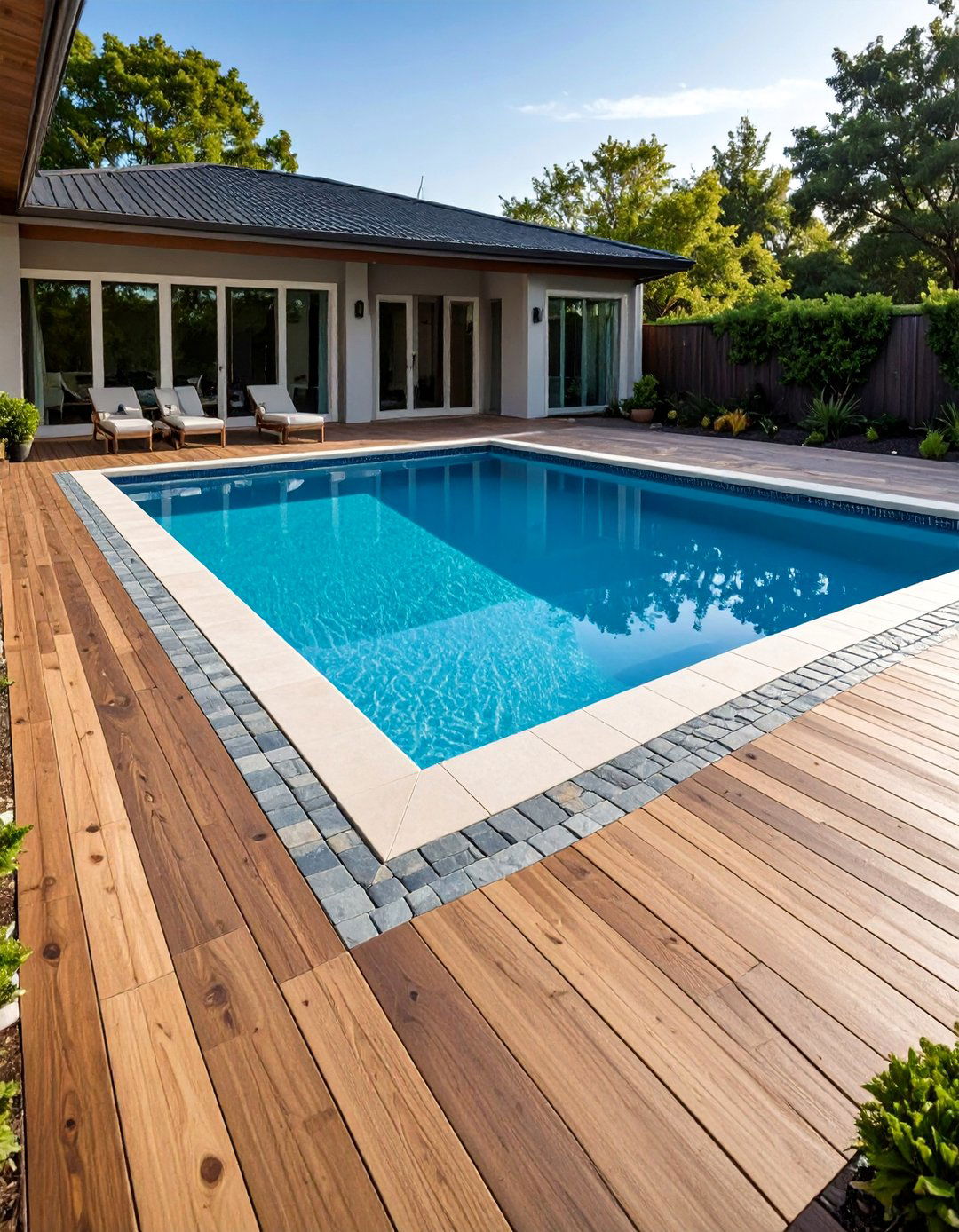
Cobblestone stamping mimics the rounded, weathered appearance of old-world cobble streets, lending historic charm to pool decks. Mats with staggered, oval-shaped stones create a textured surface that channels water run-off into the grout lines. Ideal for Mediterranean and Tuscan-style gardens, the cobblestone finish becomes more authentic over time as light wear rounds edges naturally. It pairs beautifully with stone planters, wrought-iron furniture, and terra cotta accents, offering a resort-style ambiance.
12. Random Stone Layout
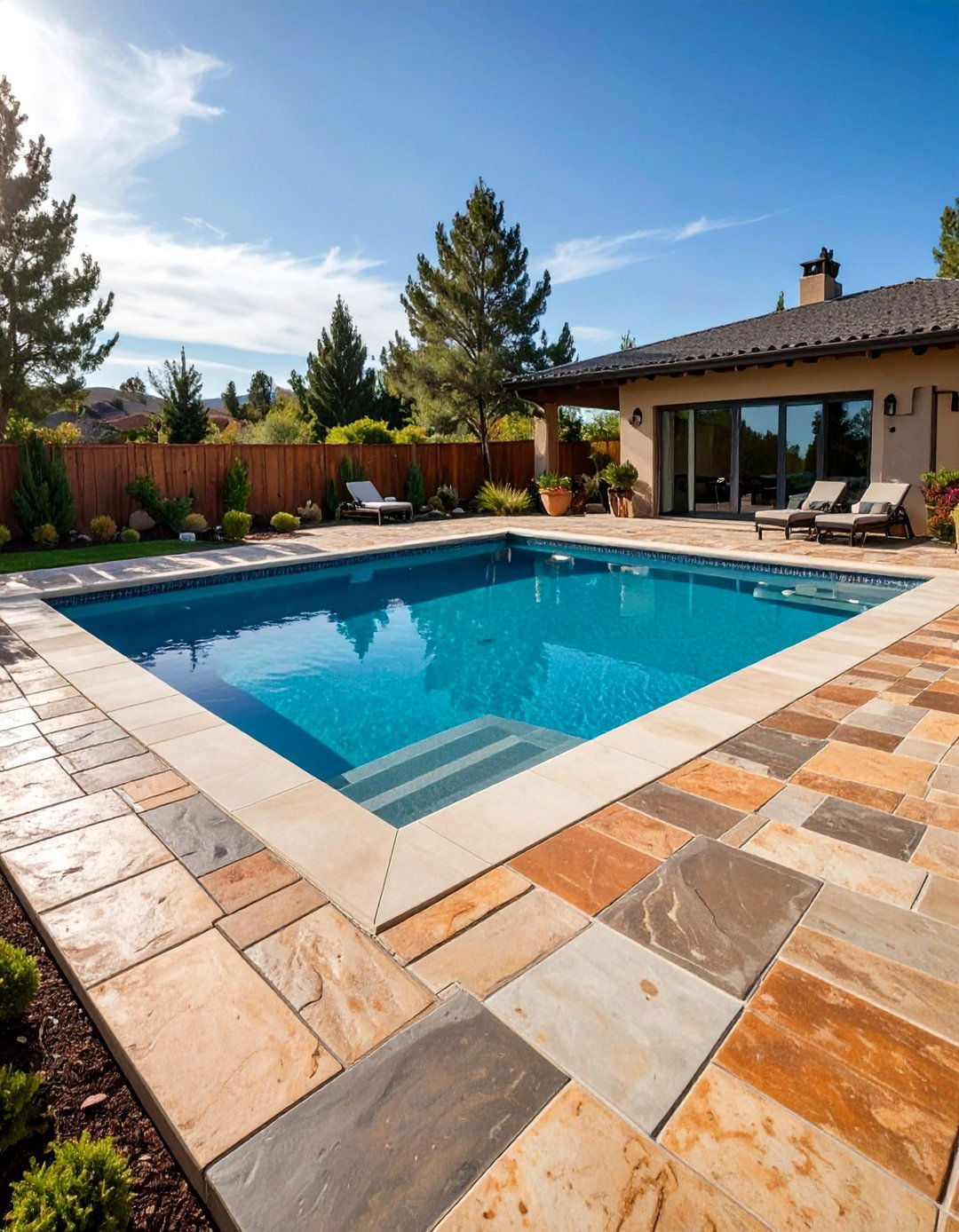
For a casual, rustic appeal, random stone stamping uses mats of varying shapes and sizes to produce an irregular field pattern. Contrasting release colors—like tan and slate gray—highlight the stones’ outlines, emphasizing the organic layout. This design thrives in woodland or cottage-style landscapes, where it harmonizes with planting beds and natural rock features. The random stone approach hides seams effectively and minimizes visible control joints, providing a seamless surface perfect for lively pool parties.
13. Exposed Aggregate Accents
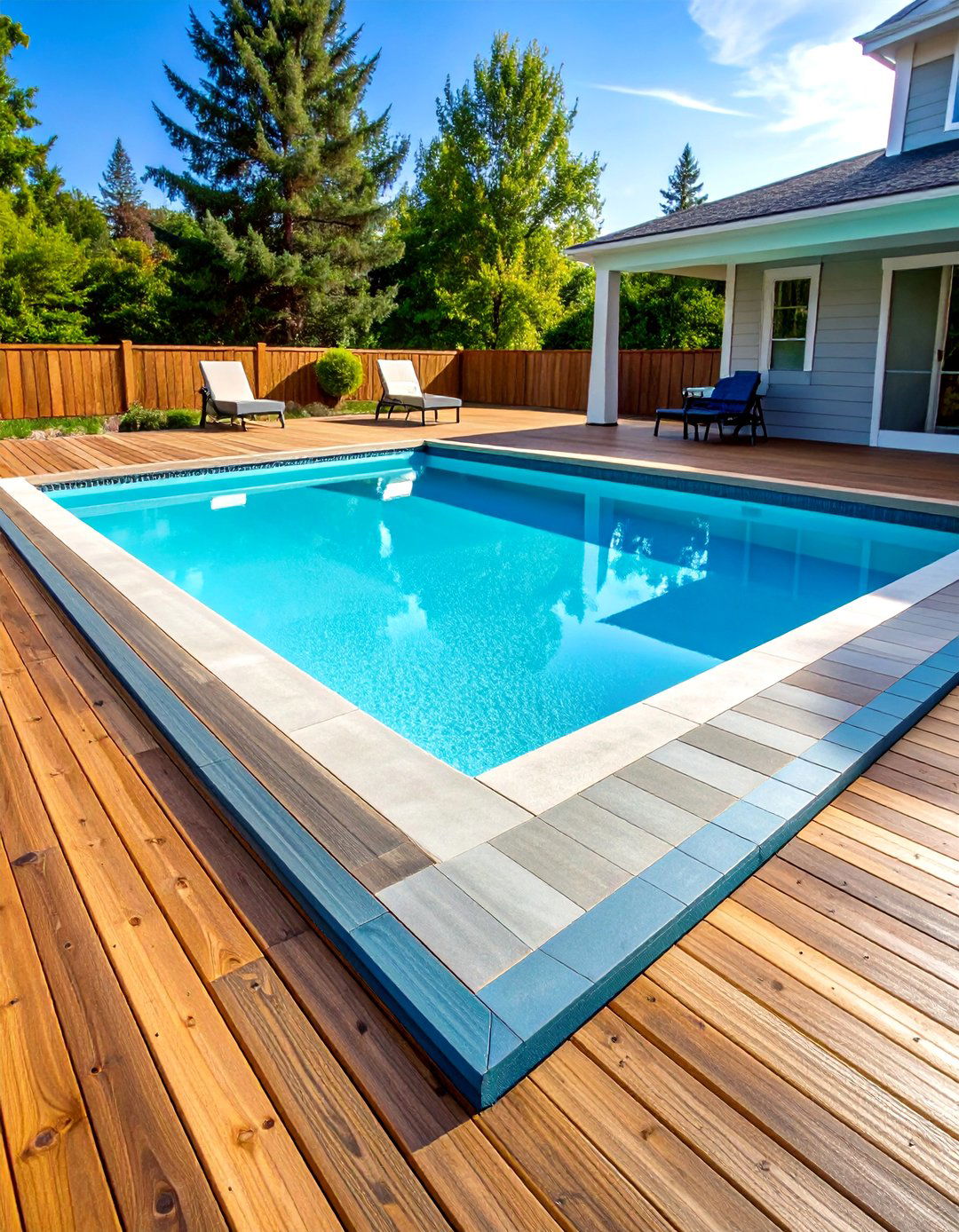
Combining stamped concrete with exposed aggregate borders introduces a striking contrast of textures. While the stamped central field emulates stone or wood, the perimeter features a polished aggregate reveal—often glass beads or river rock—for a sparkling, non-slip finish. This hybrid design delineates zones, framing seating areas or fire pits, and enhances light reflection around the pool. Exposed aggregate is durable and low maintenance, making it a practical accent that complements the decorative field.
14. Two-Tone Color Contrast
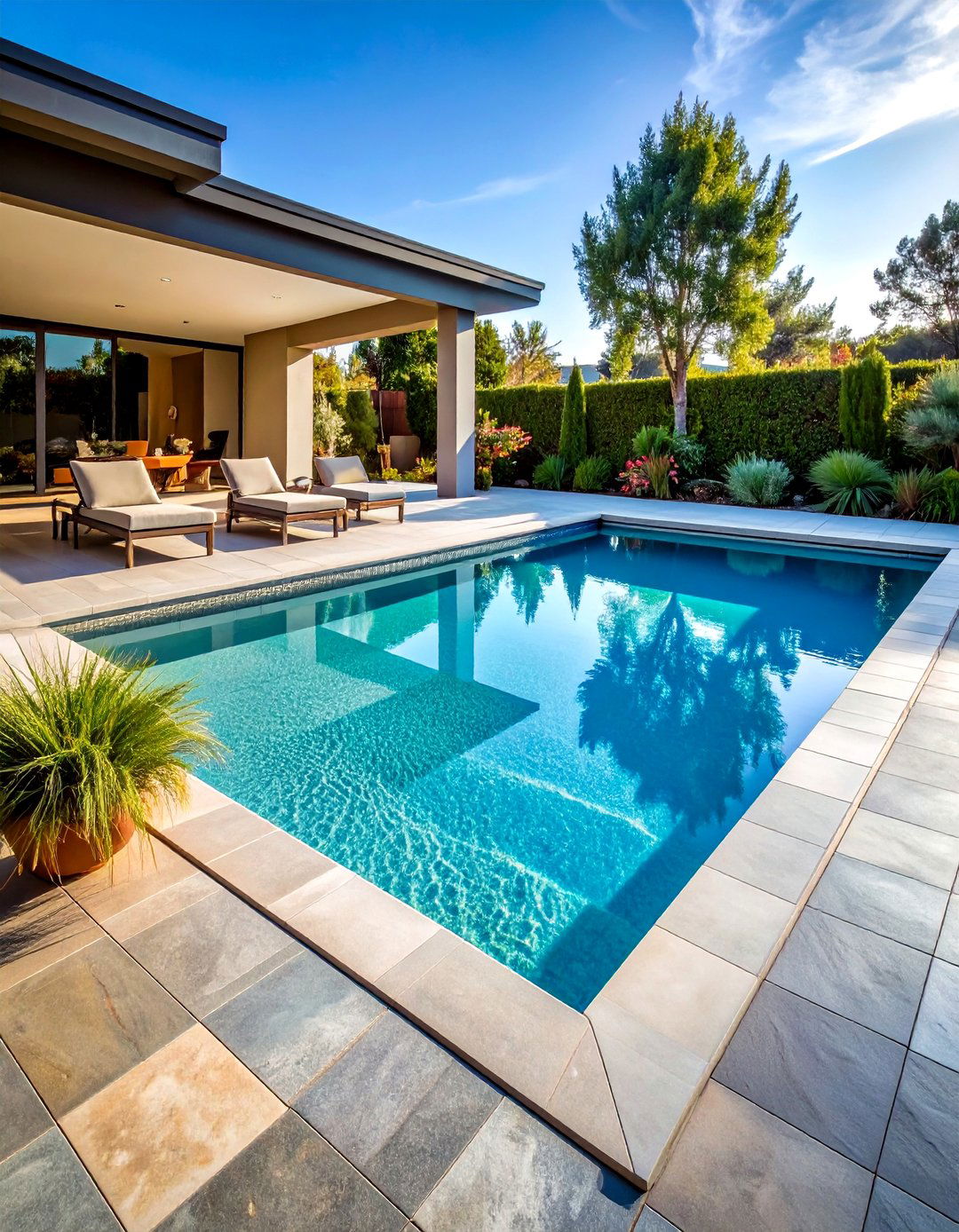
Using two contrasting color hardeners—such as light and dark gray—accentuates the depth and definition of a stamped pattern. The base mix receives one color, while the release agent or hardener for the top layer carries another. When stamped, the darker tones settle into the grout lines, accentuating pattern outlines, while lighter hues highlight raised surfaces. This dynamic finish enhances visual texture, making geometric or slate patterns pop, and gives pool decks a custom, designer look.
15. Mixed Material Inlays
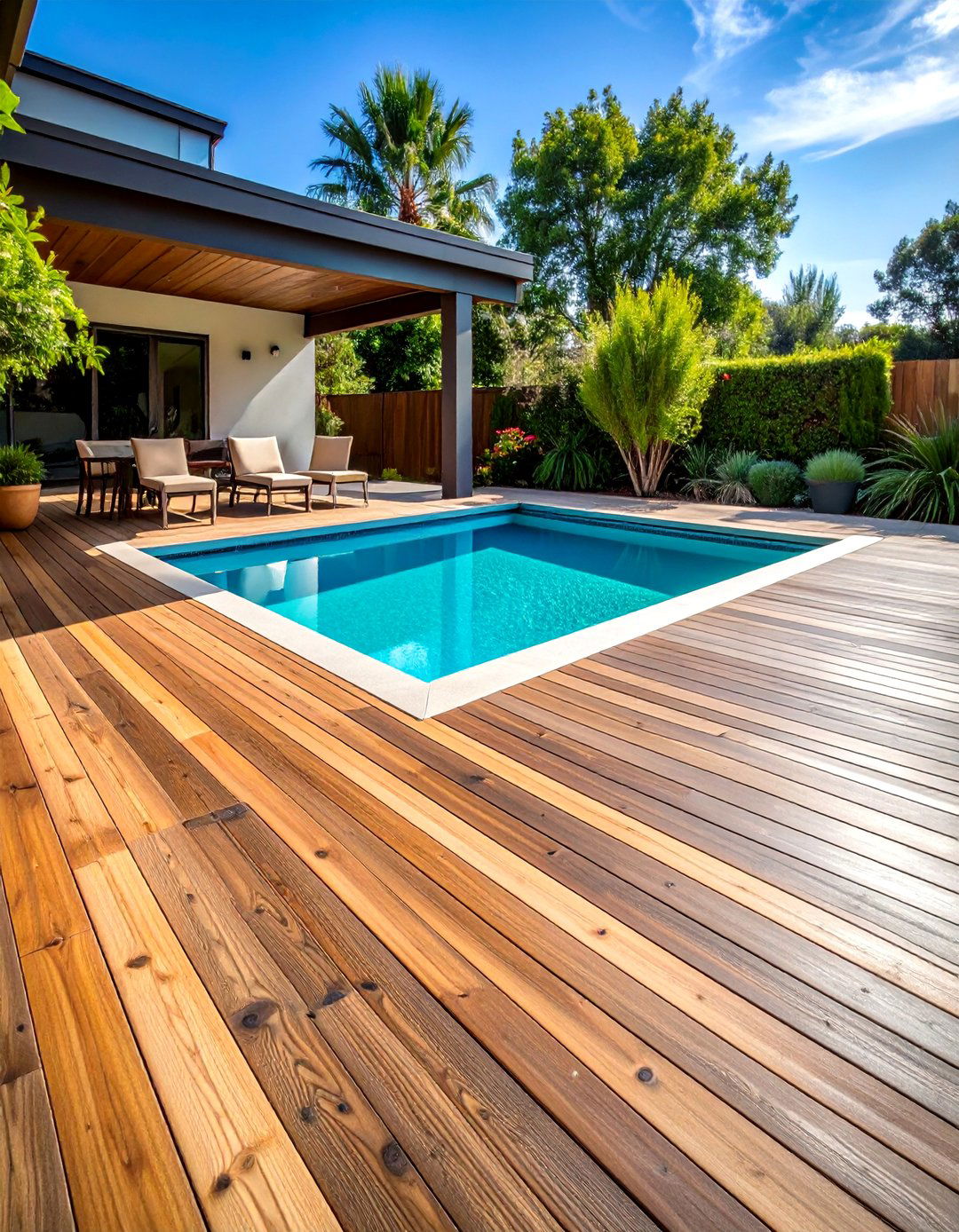
Stamped concrete can be seamlessly combined with inlaid materials—such as brick pavers, natural stone, or wood inserts—to create unique focal points. Contractors pour channels or recesses before stamping, then set the contrasting inlay materials flush with the concrete surface. This method allows for decorative motifs, borders, or pathways that stand out against the stamped field. Mixed material inlays offer endless customization, enabling homeowners to integrate existing masonry features or highlight poolside landscaping.
16. Medallion Centerpiece
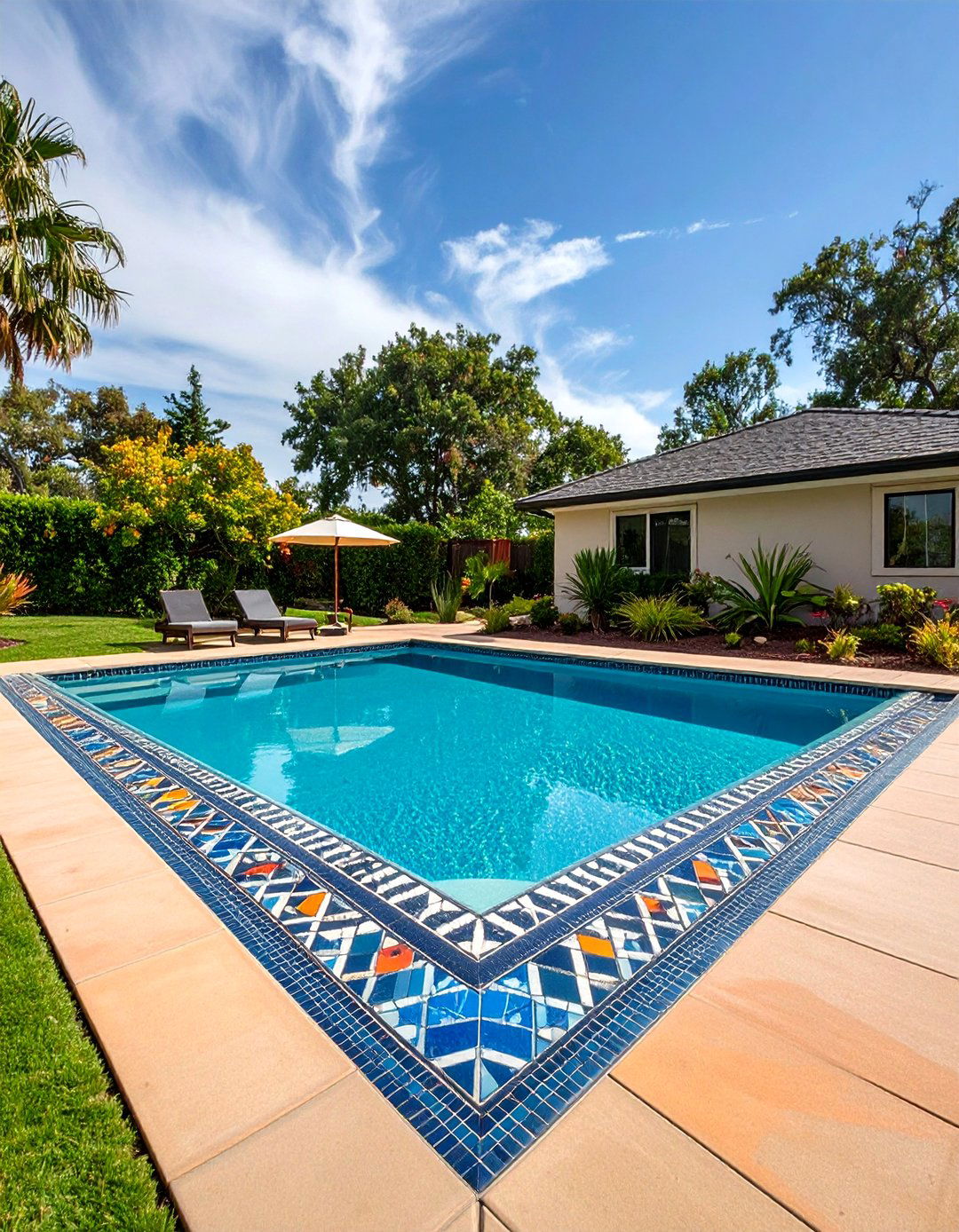
Radial or medallion stamps create a striking central motif on a pool deck. Using circular or sunburst mats, artisans imprint concentric patterns that draw the eye to a focal point—perfect for round pools or seating areas. Hand-colored release agents can amplify the design, with gradient shading or metallic finishes for added drama. Medallion centerpieces elevate a standard deck into an artistic statement, anchoring lounge spaces or outdoor dining setups.
17. Custom Border Patterns
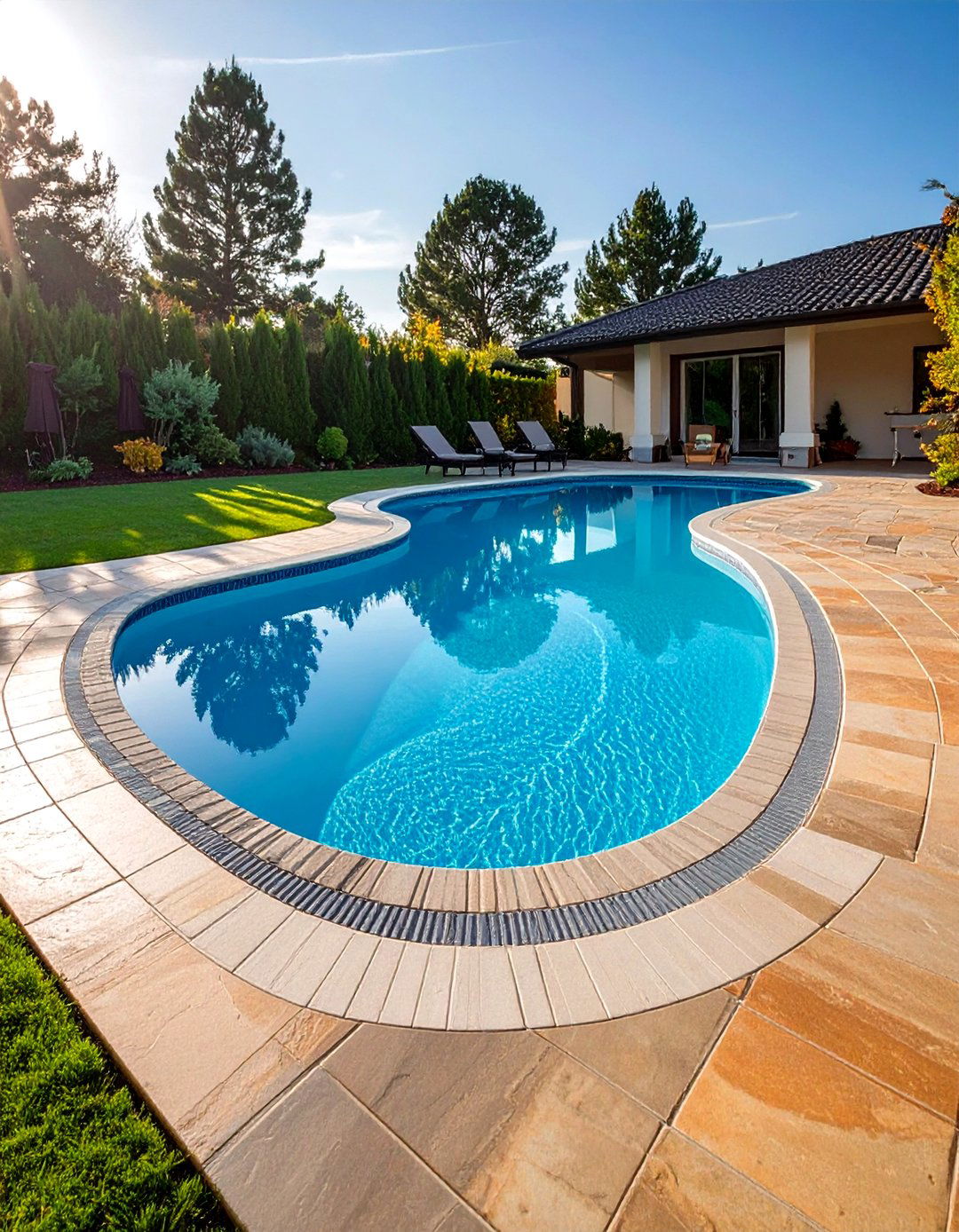
Beyond simple cuts or broom finishes, custom border stamping uses narrow tools to imprint decorative motifs—like rope twists, vine scrolls, or geometric lines—along the deck perimeter. These bespoke borders can mirror architectural details of the home, reflect personal tastes, or coordinate with pool coping. Achieved with specialty stamp strips applied after the main field, custom borders personalize the space and seamlessly transition between the deck and adjacent patios or pathways.
18. Non-Skid Grit Sealer Finish
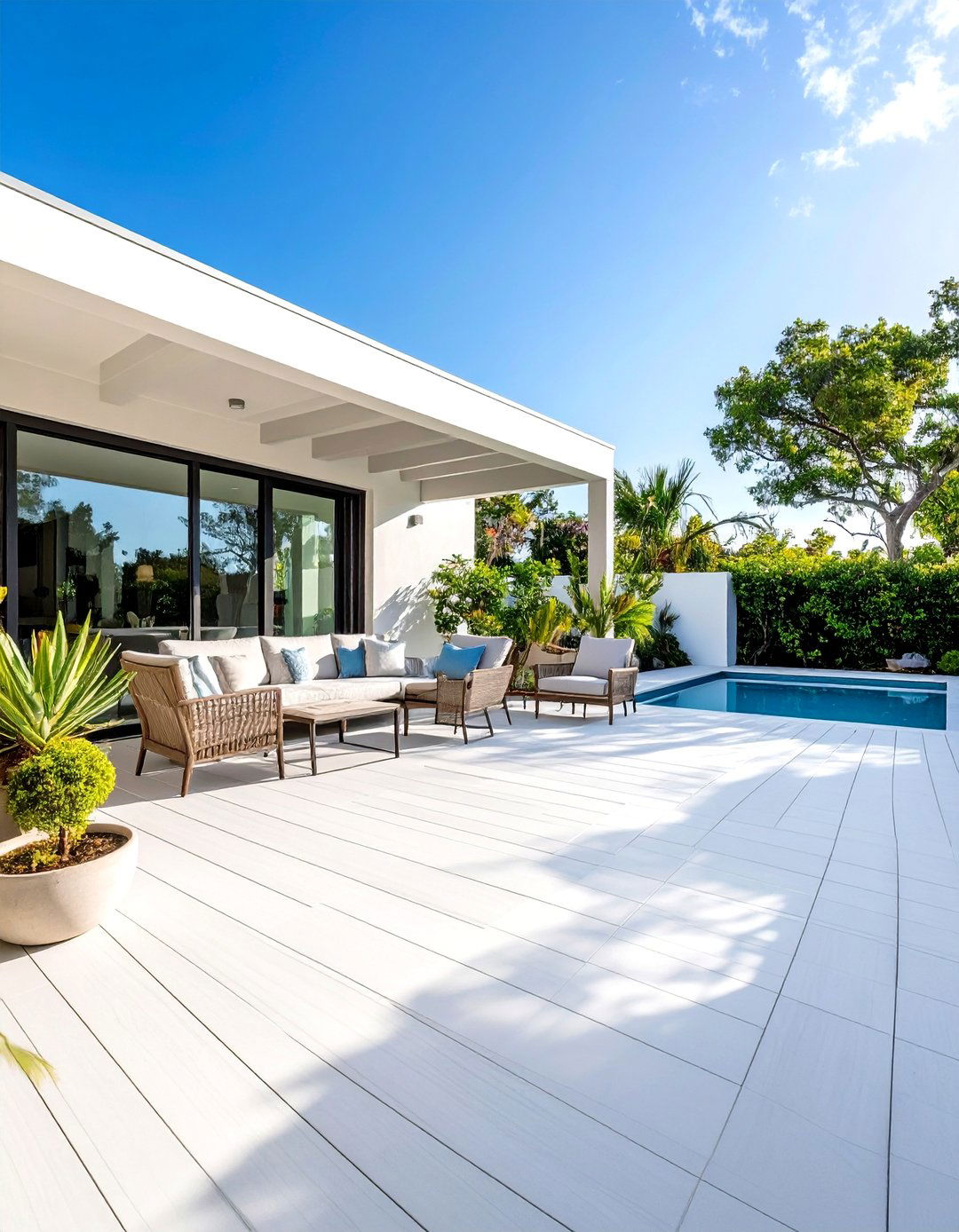
Maximizing safety, a non-skid grit additive mixed into the sealer enhances traction on stamped surfaces. After stamping and coloring, two coats of sealer—one clear and one with fine silica grit—ensure the deck remains comfortable to walk on and resists slipping when wet. This treatment preserves the look of the stamped pattern while adding a durable, skid-resistant layer, making it ideal for family pools or public installations where safety is paramount.
19. Broom-Finish Border with Stamped Center
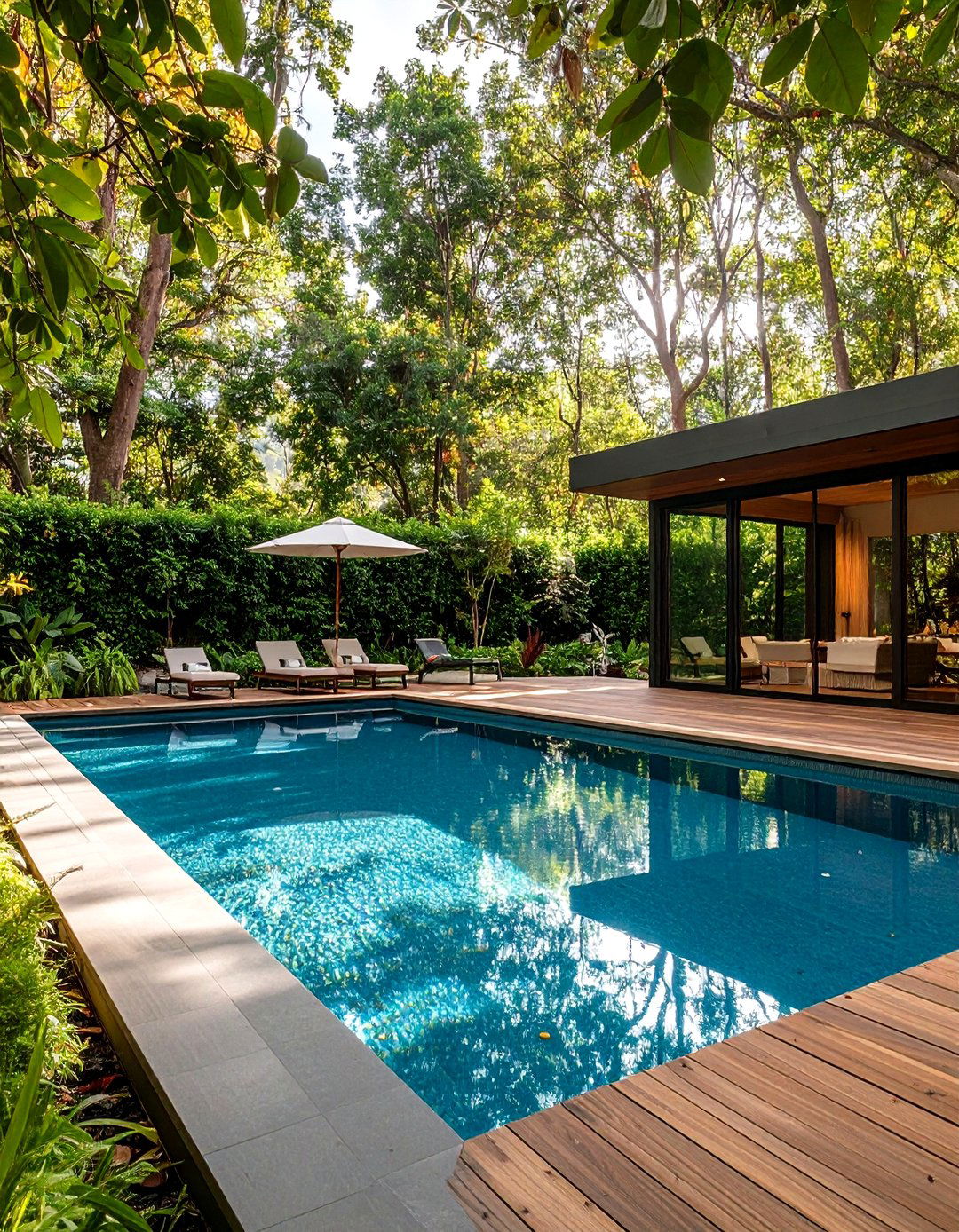
A broom-finished concrete border paired with a stamped interior offers a textural and visual frame for the deck. The perimeter is swept with a broom to create uniform ridges, enhancing slip resistance and contrasting the central stamped pattern—whether slate, wood, or cobblestone. This dual-finish technique clearly delineates zones, guides foot traffic, and provides an affordable way to combine two classic finishes in one cohesive design.
20. Stamped Overlay Resurfacing
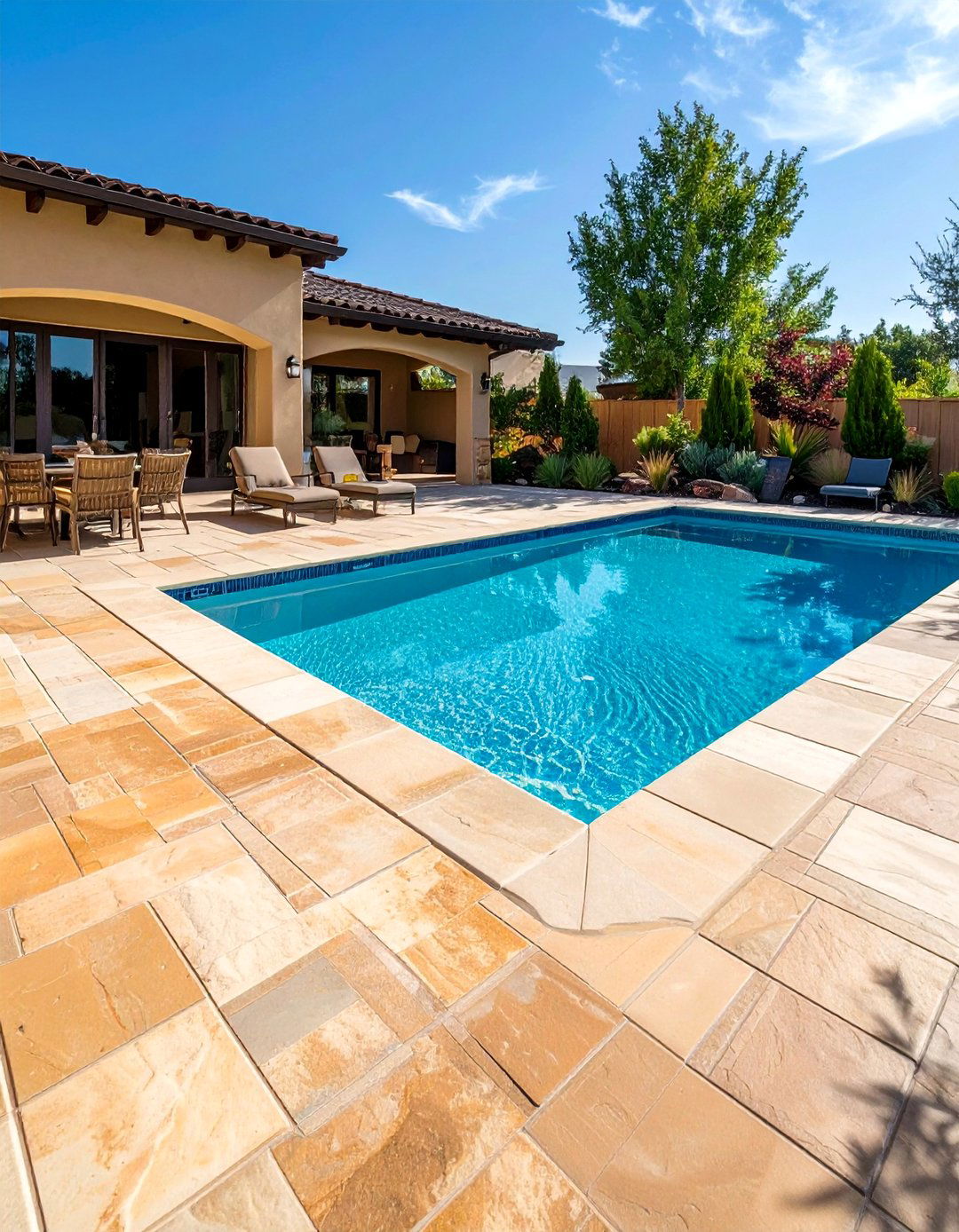
For older or damaged pool decks, stamped concrete overlays breathe new life into the surface without full replacement. Contractors apply a bonding agent, followed by a thin, durable overlay mixed with color hardeners. While still fresh, the overlay is stamped with the chosen texture and then sealed. This cost-effective solution repairs cracks, updates the look, and extends the deck’s lifespan—delivering a brand-new aesthetic at a fraction of the cost of teardown and repour.
Conclusion:
Stamped concrete pool decks redefine outdoor living by marrying form and function. From naturalistic patterns like ashlar slate and flagstone to bold geometric designs and custom inlays, there’s a style to suit every taste and architectural setting. Enhanced with color contrasts, non-skid sealers, and mixed-material accents, these decks offer the low maintenance and durability homeowners crave, without sacrificing beauty. Whether installing a fresh pour or resurfacing an existing patio, stamped concrete transforms poolside spaces into distinctive, inviting retreats that endure for years to come.


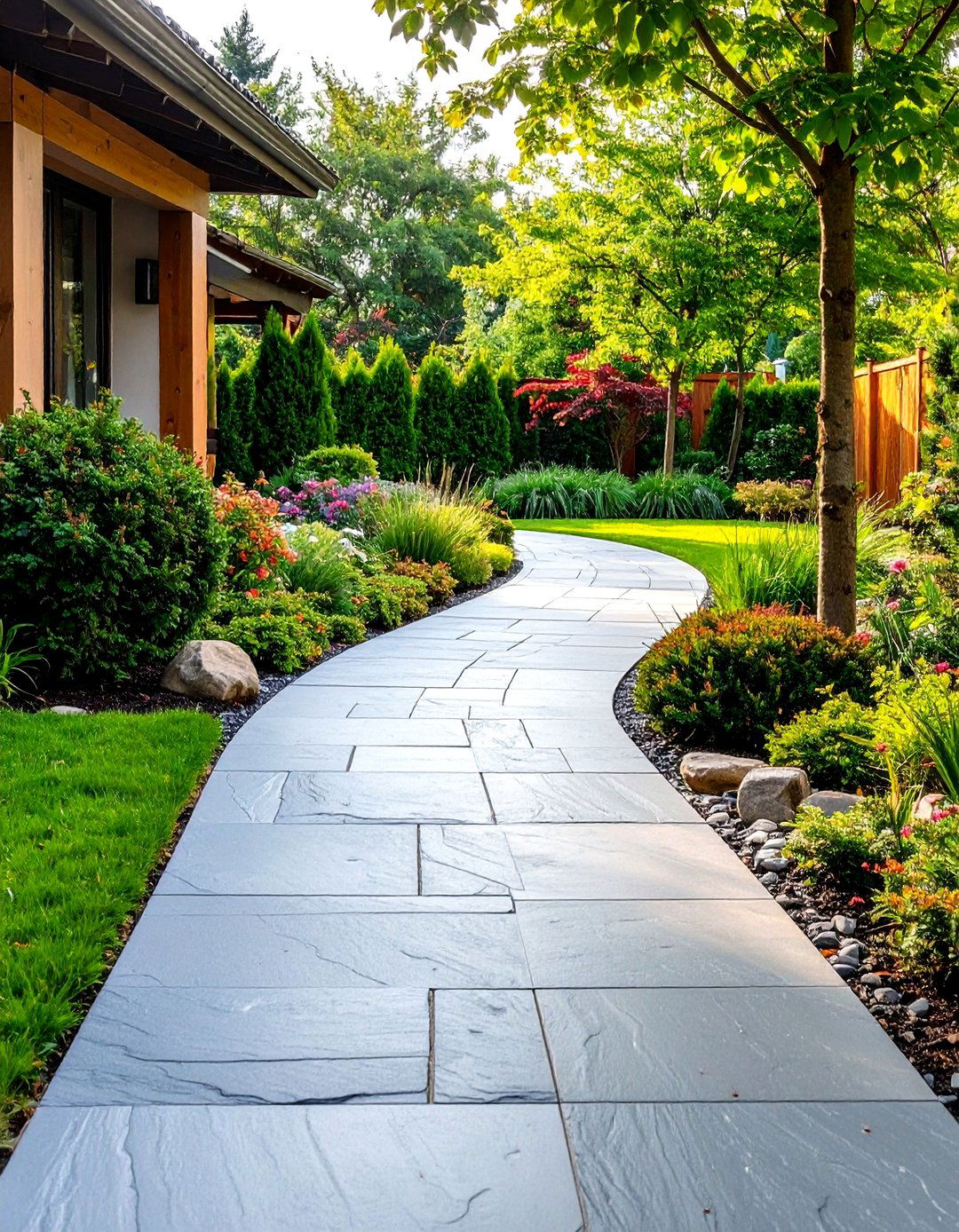

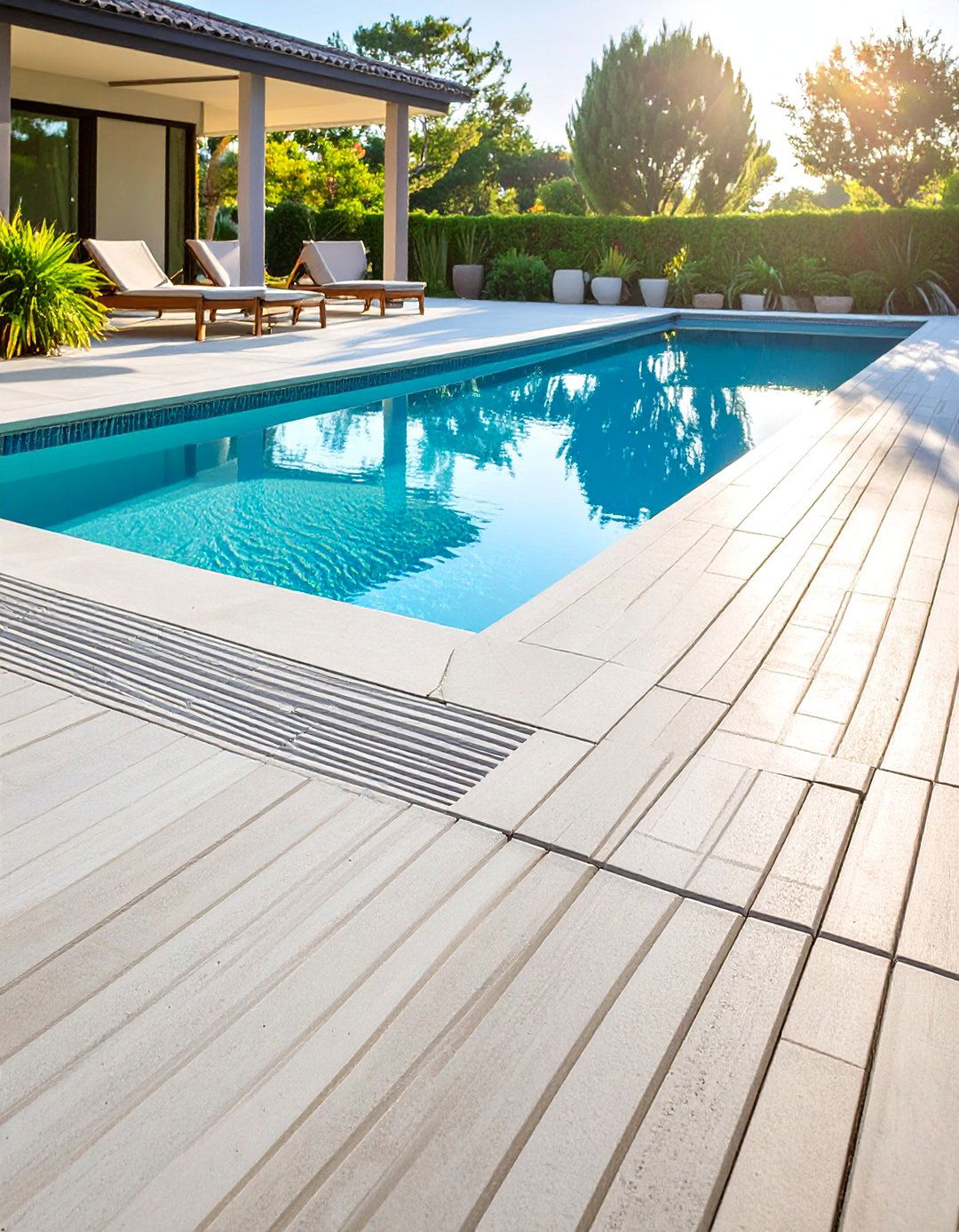
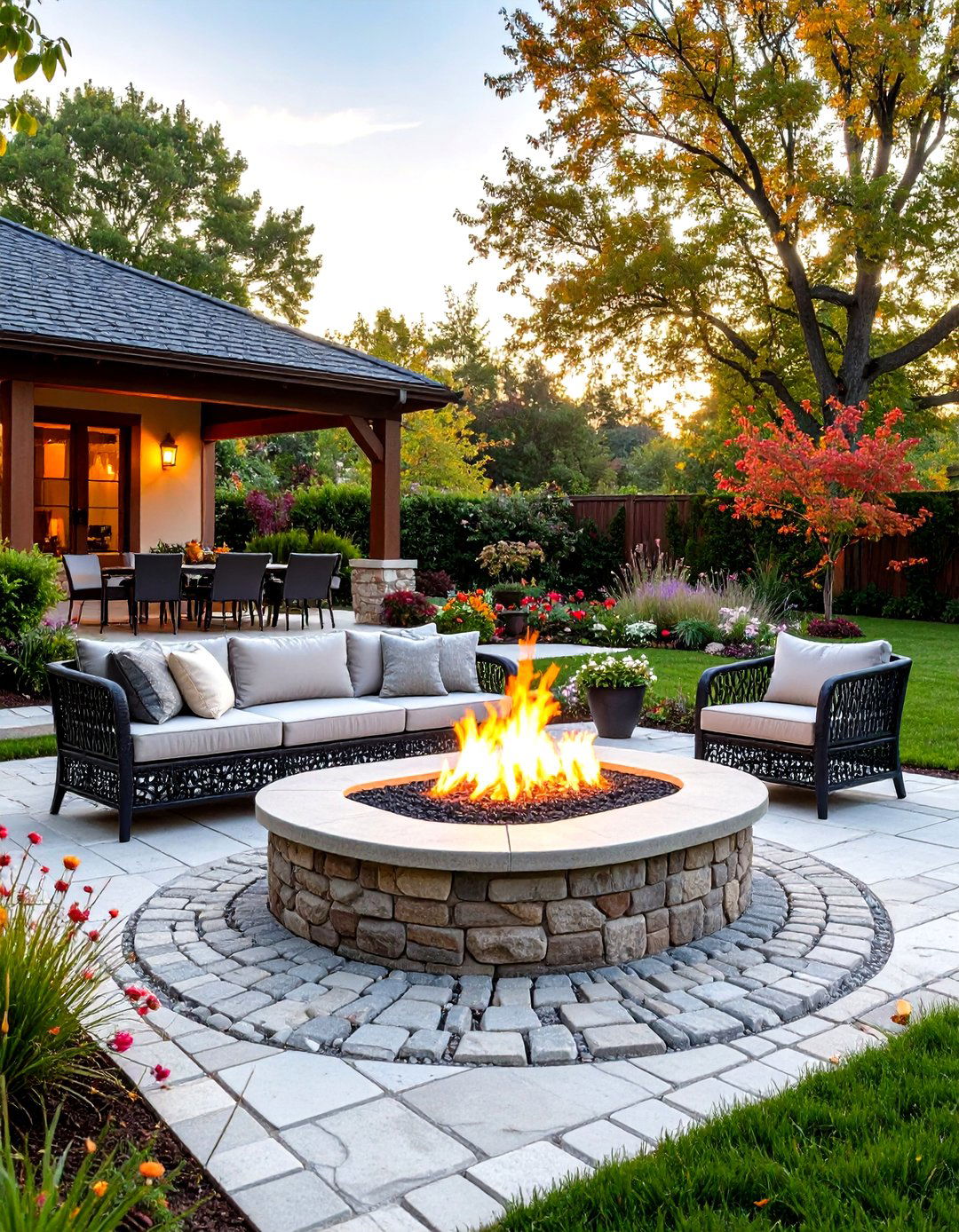
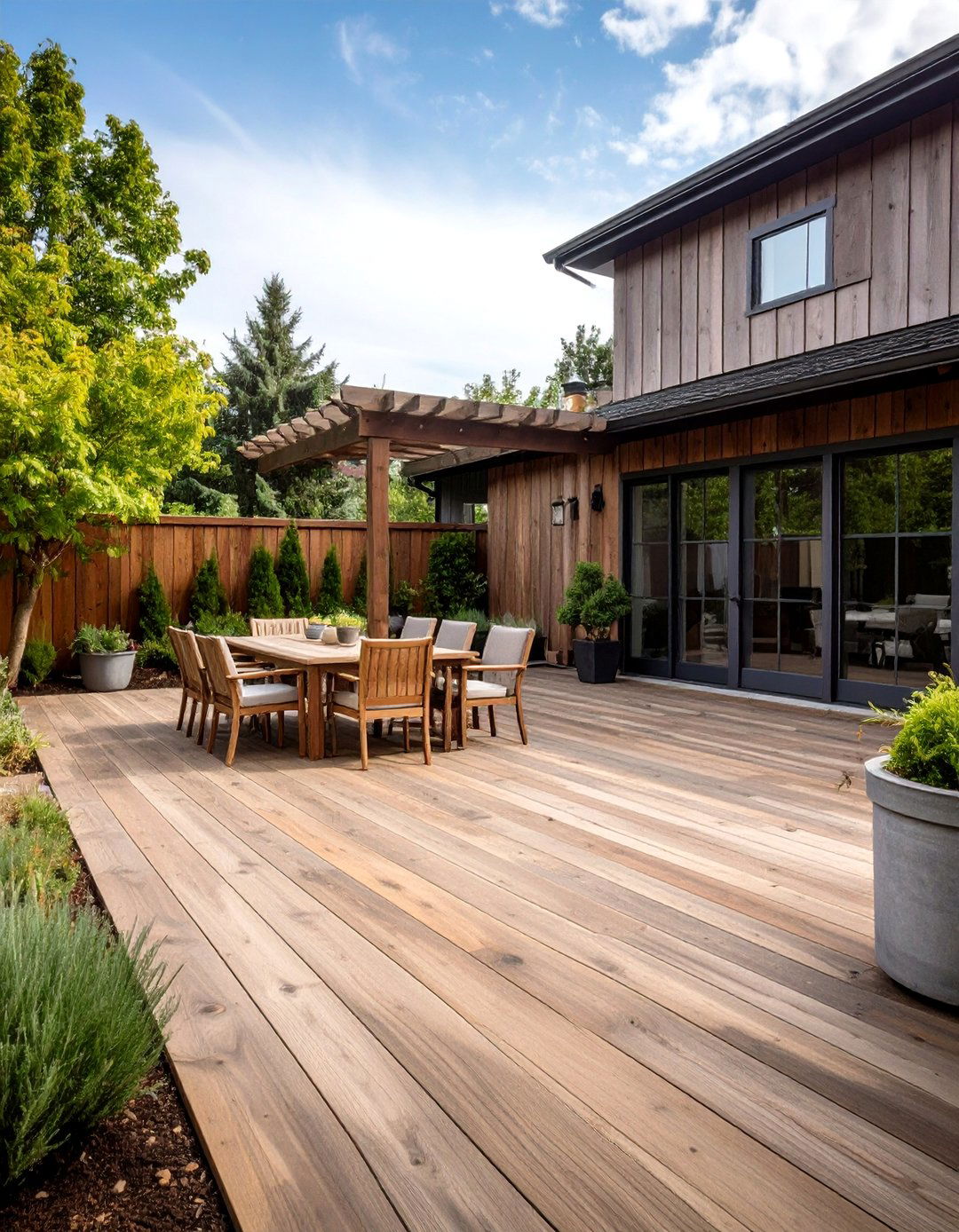

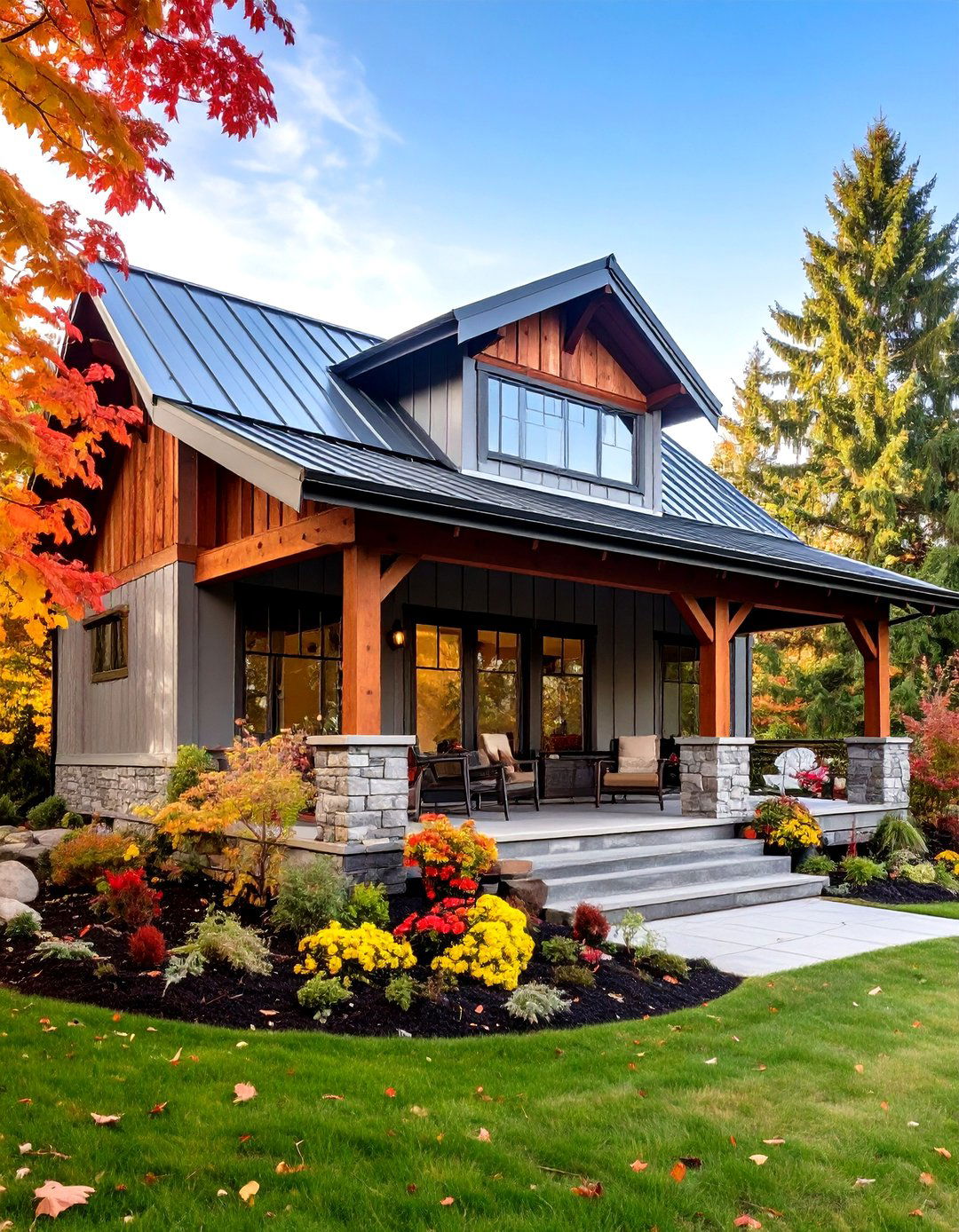
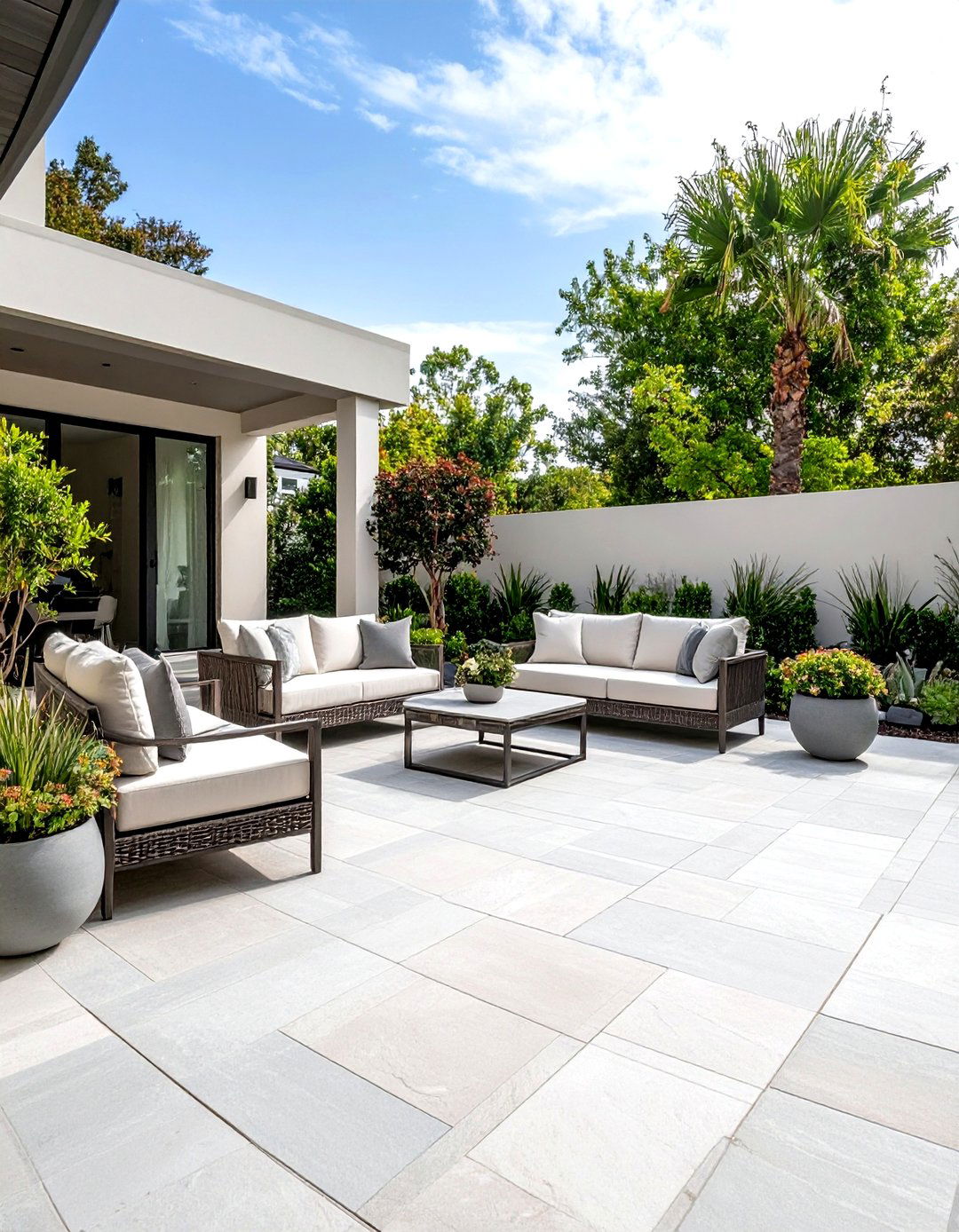

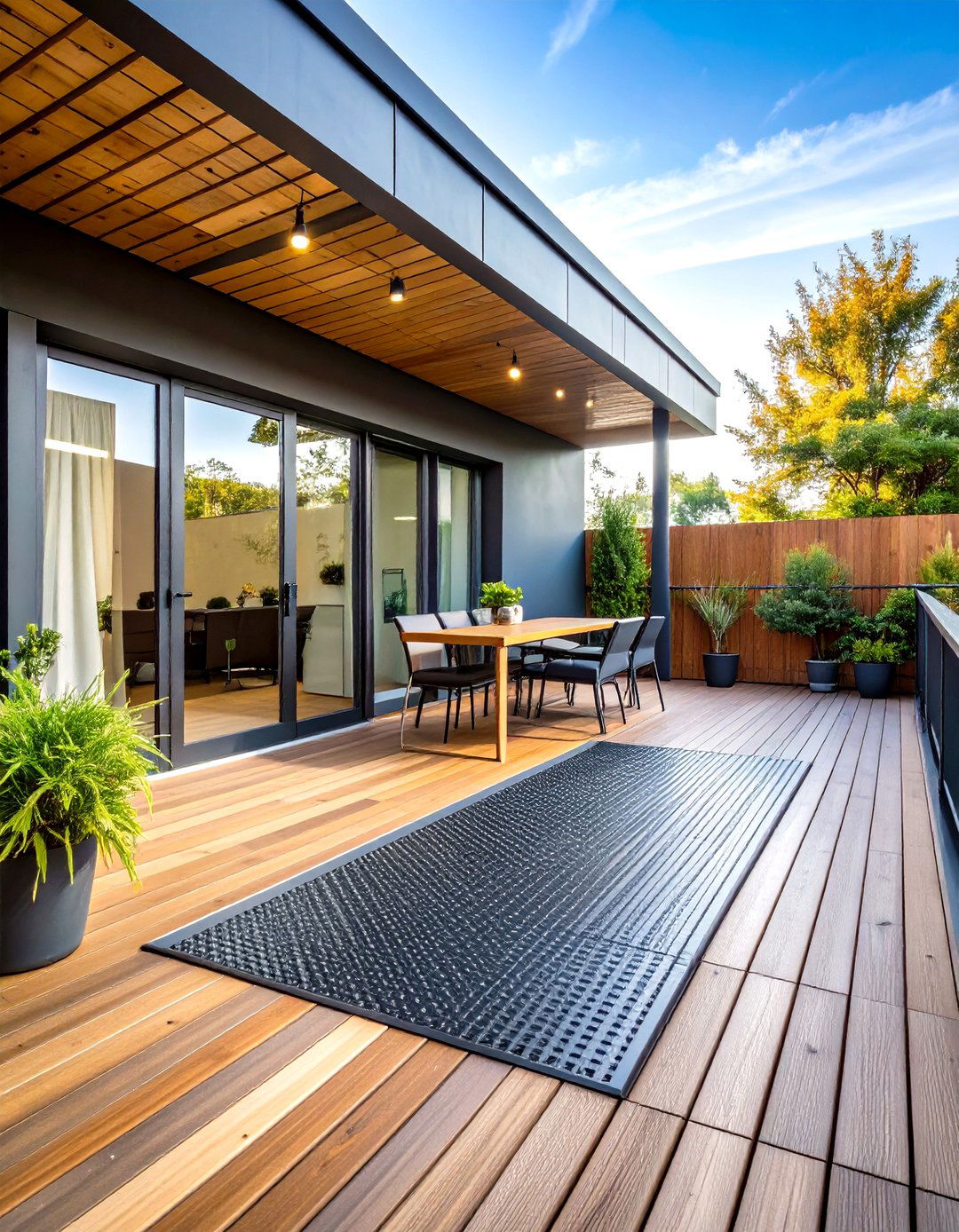
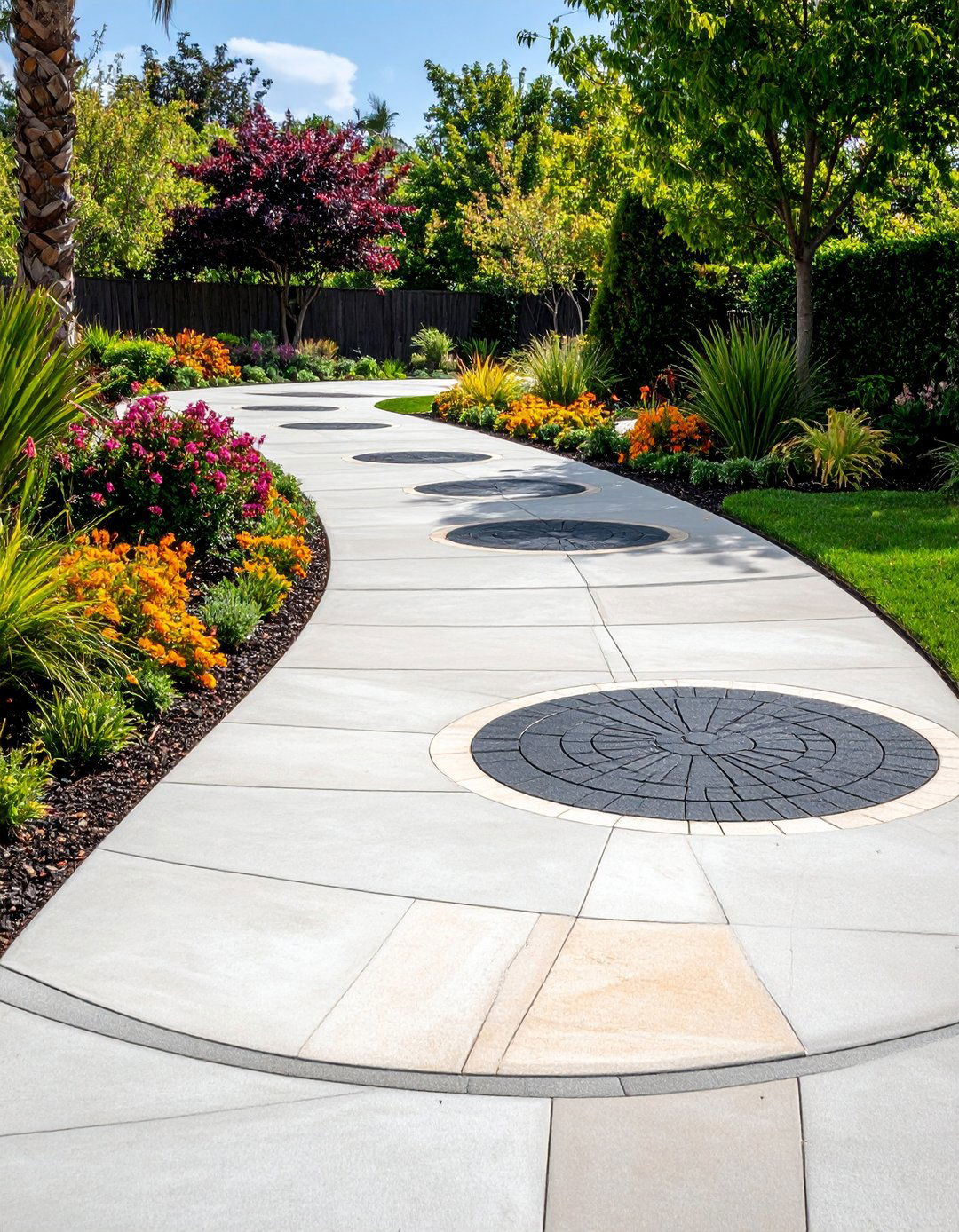
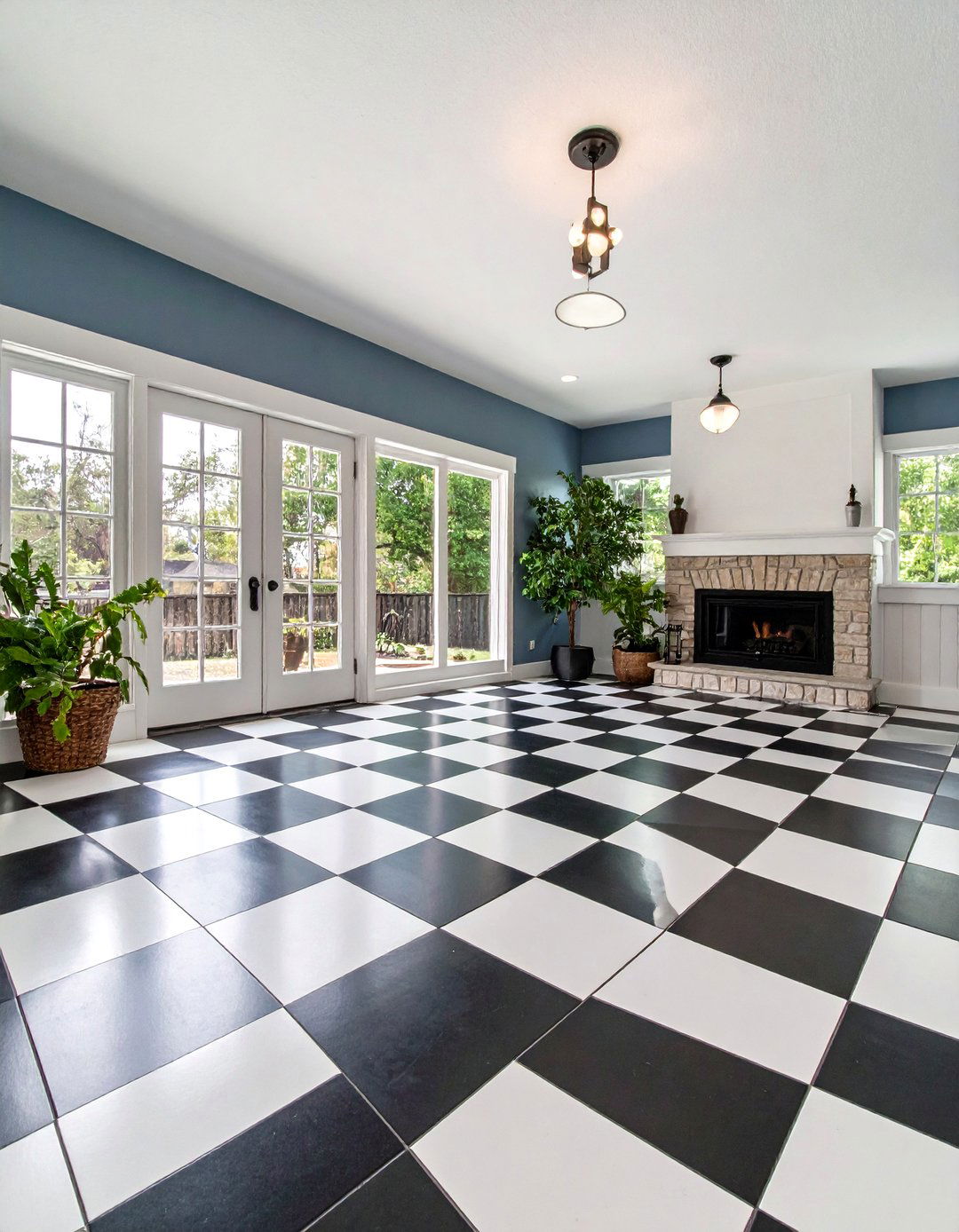


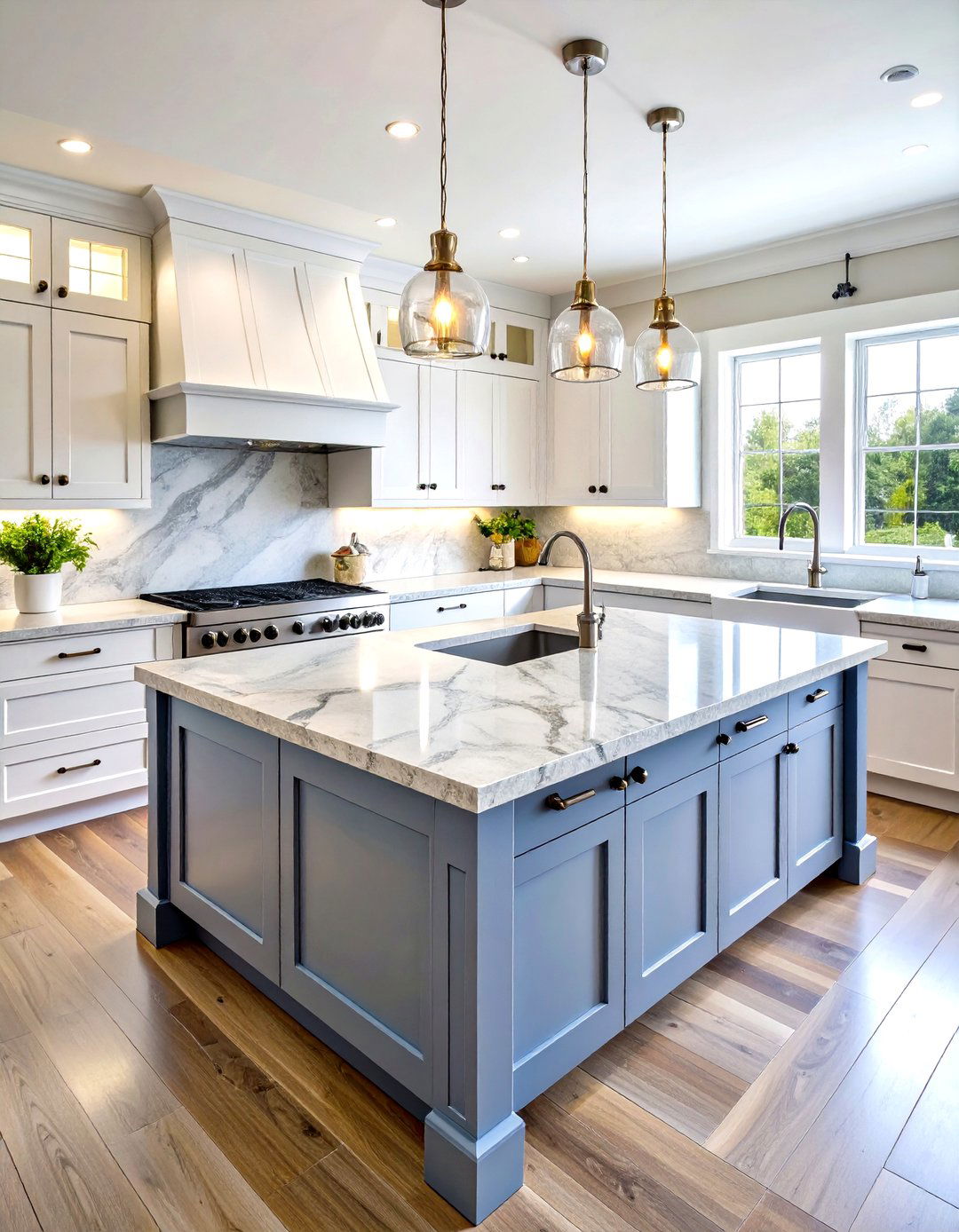
Leave a Reply